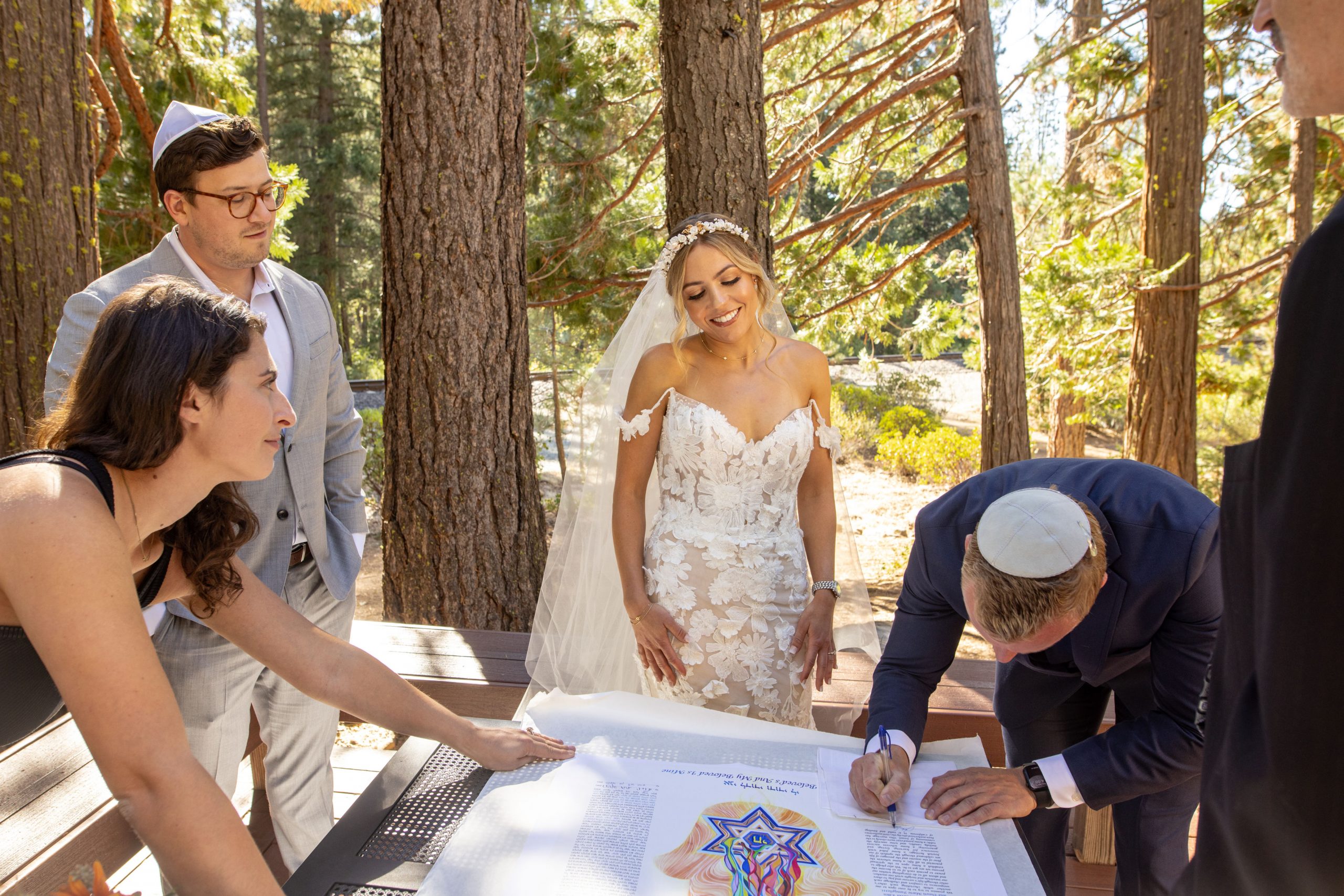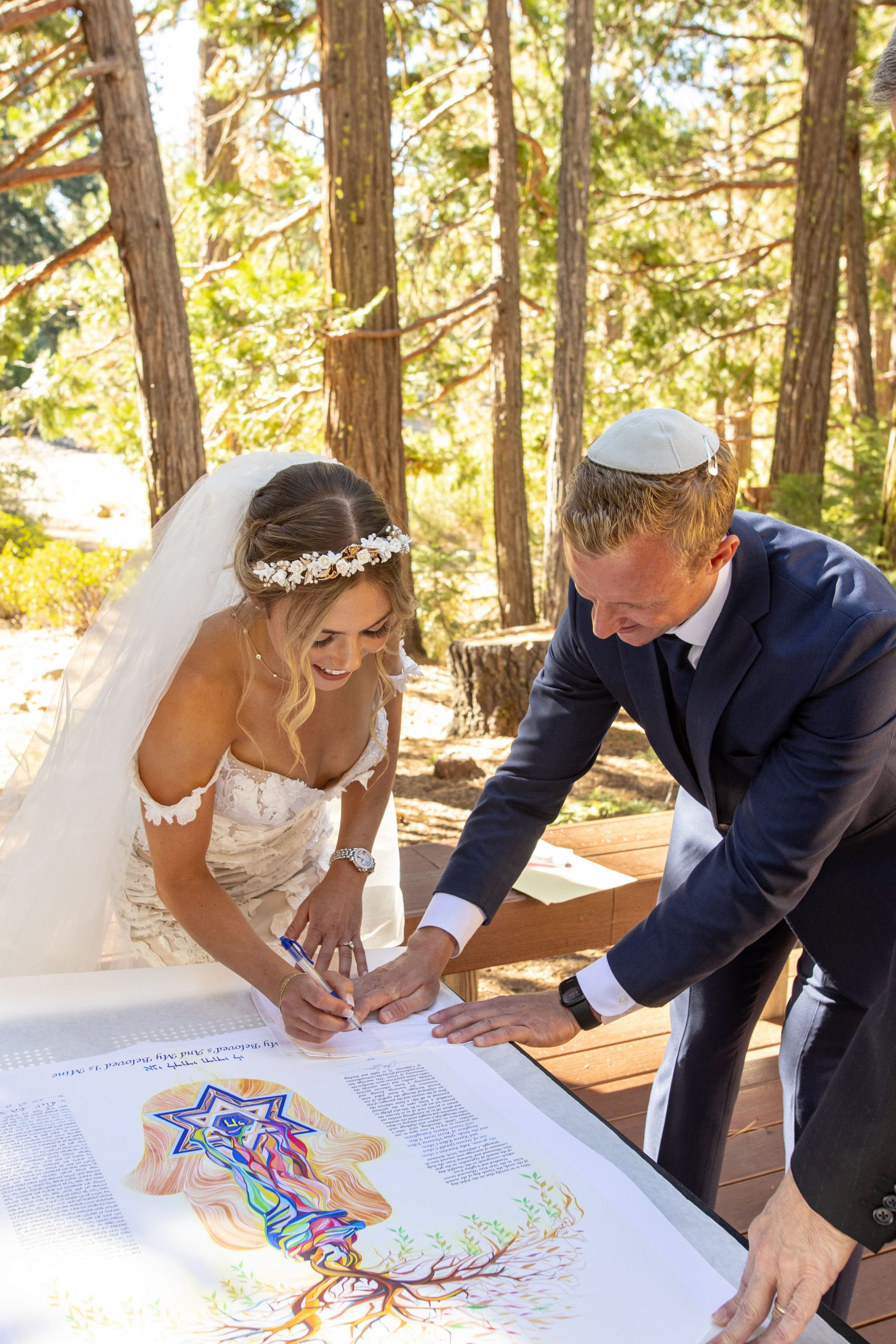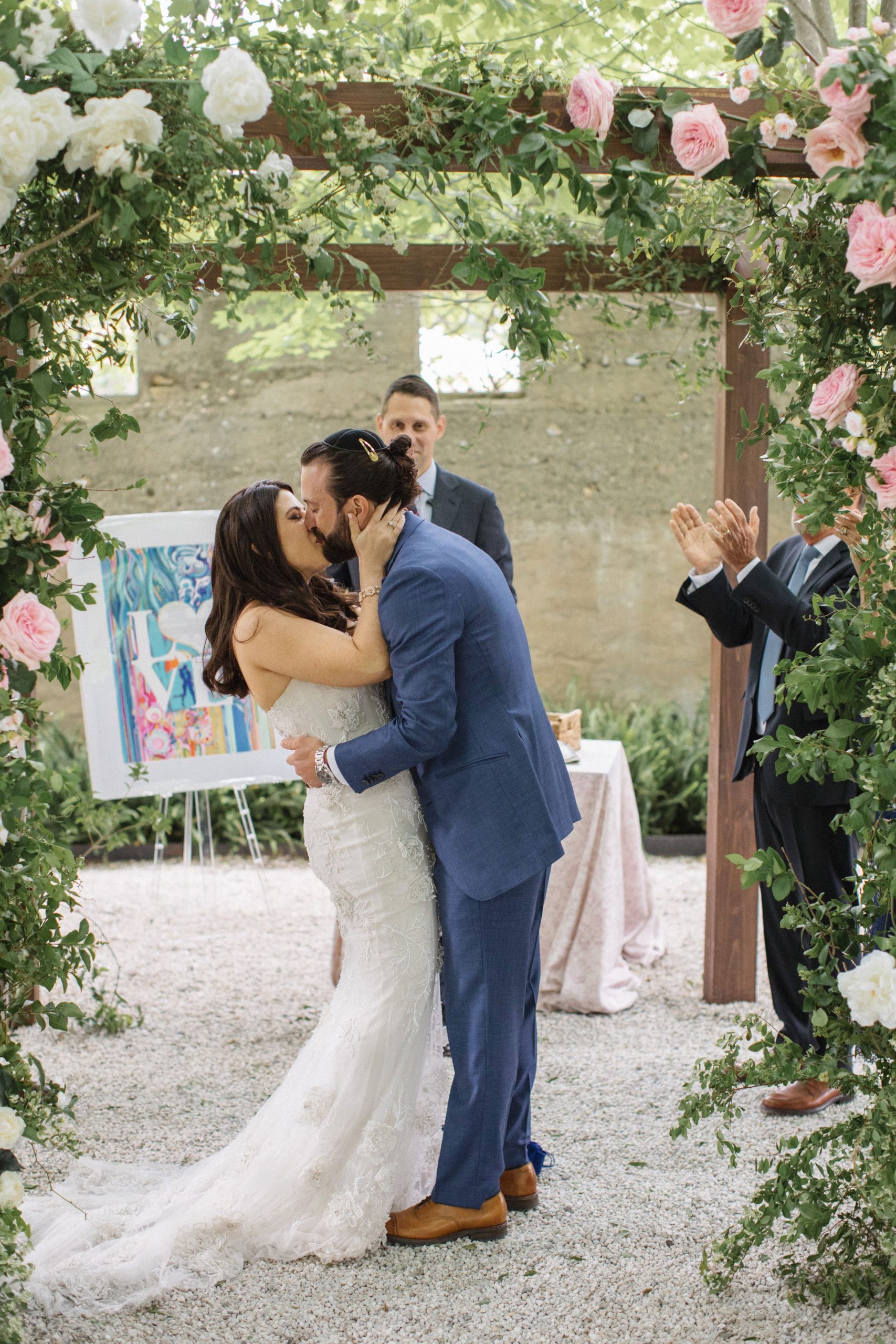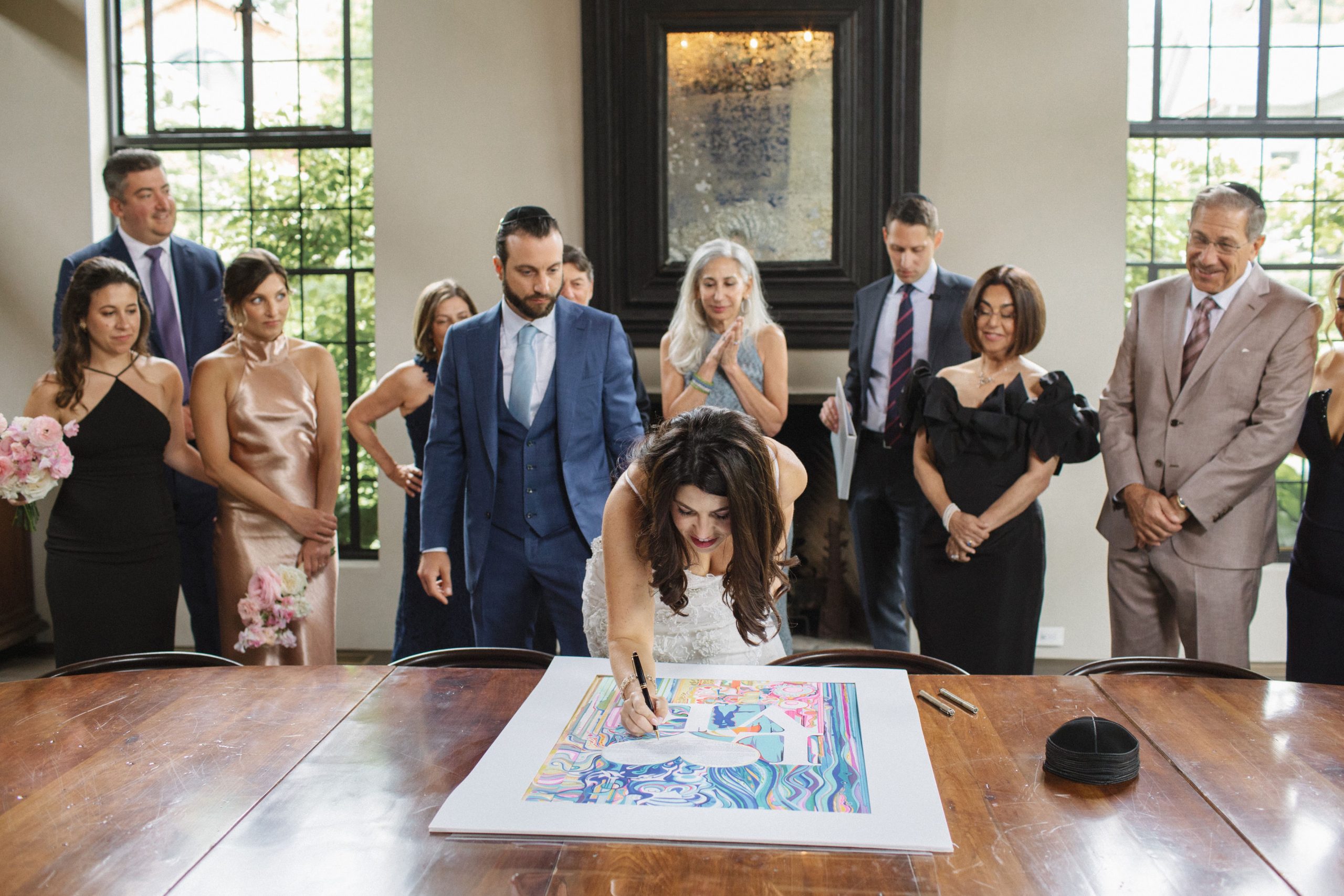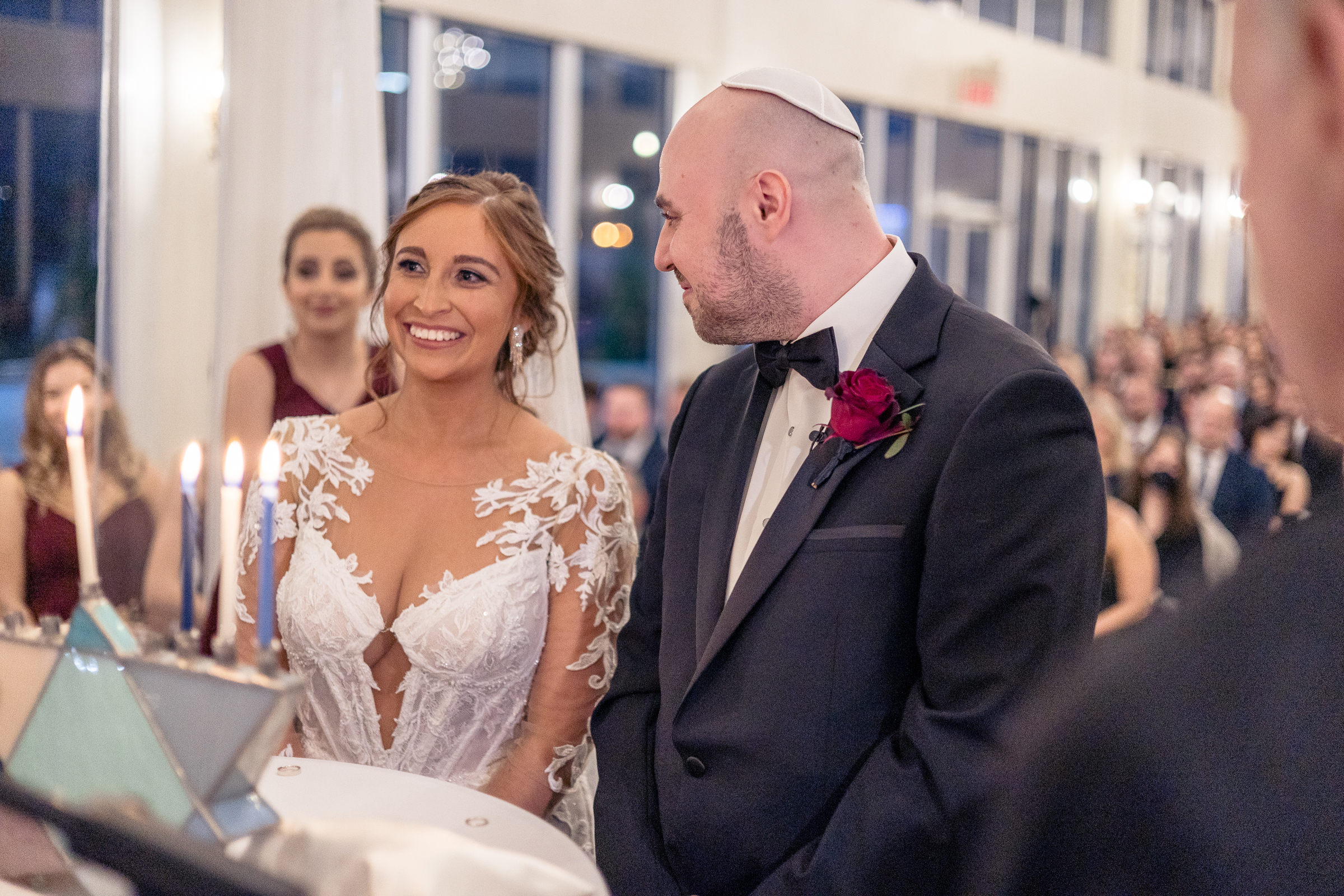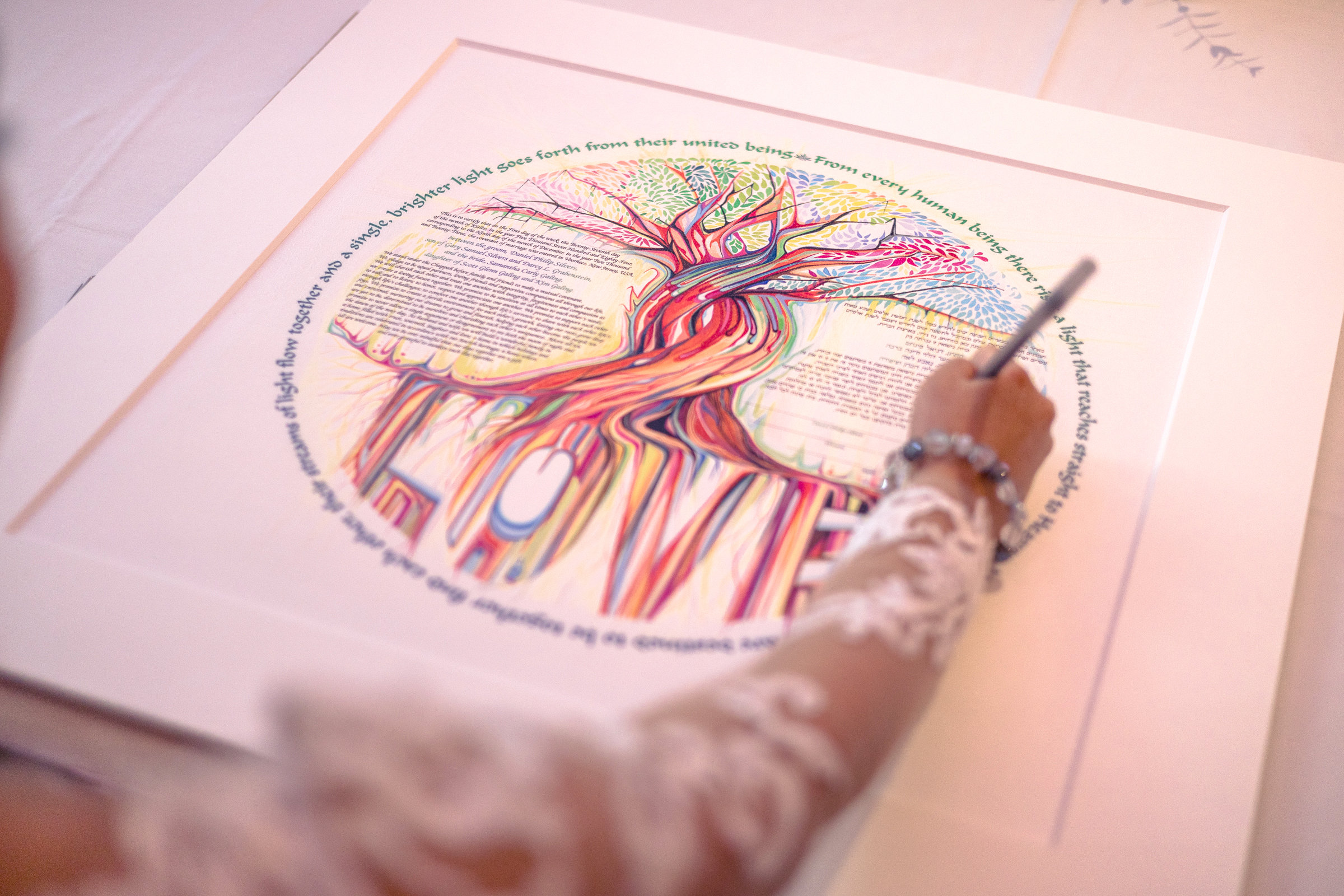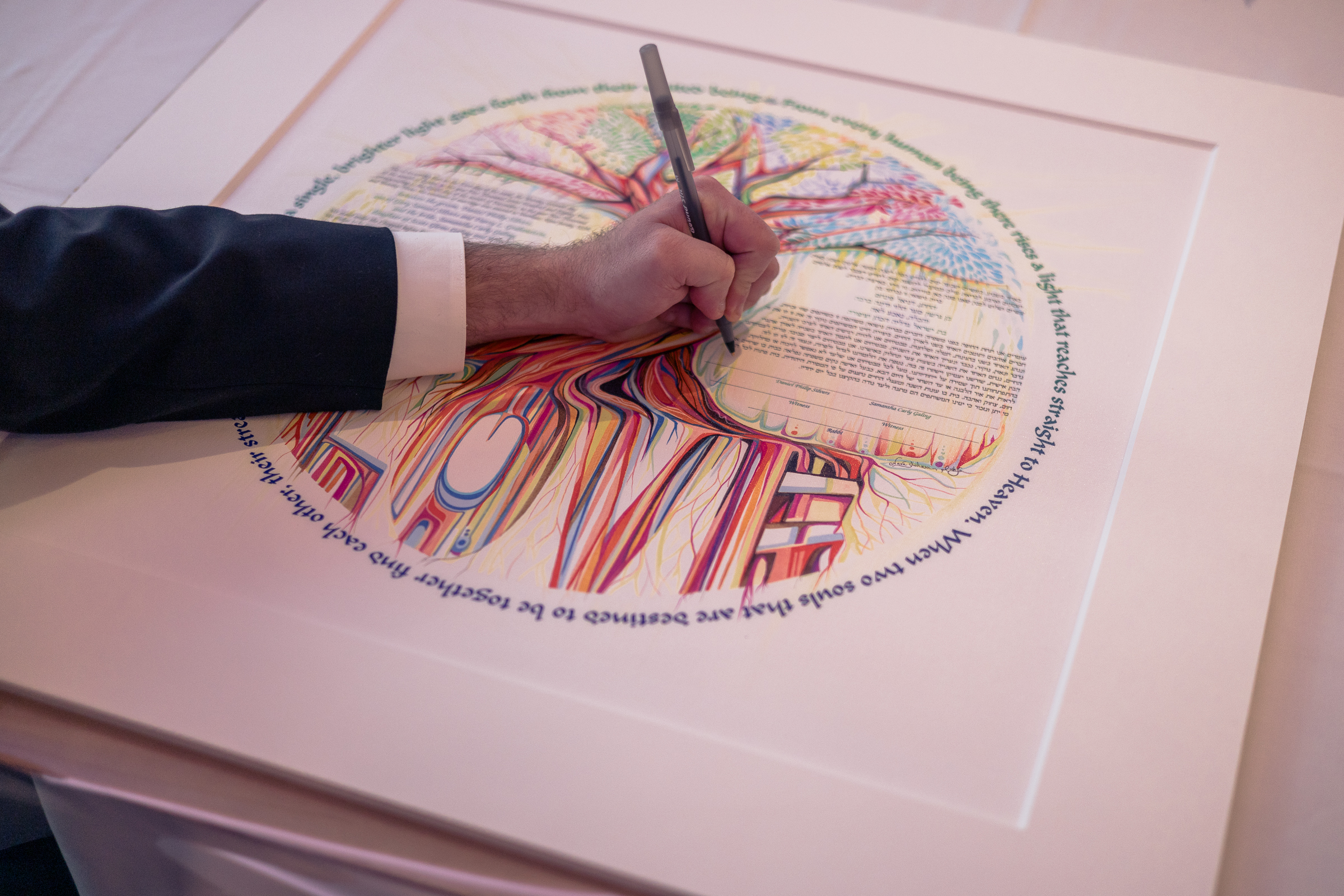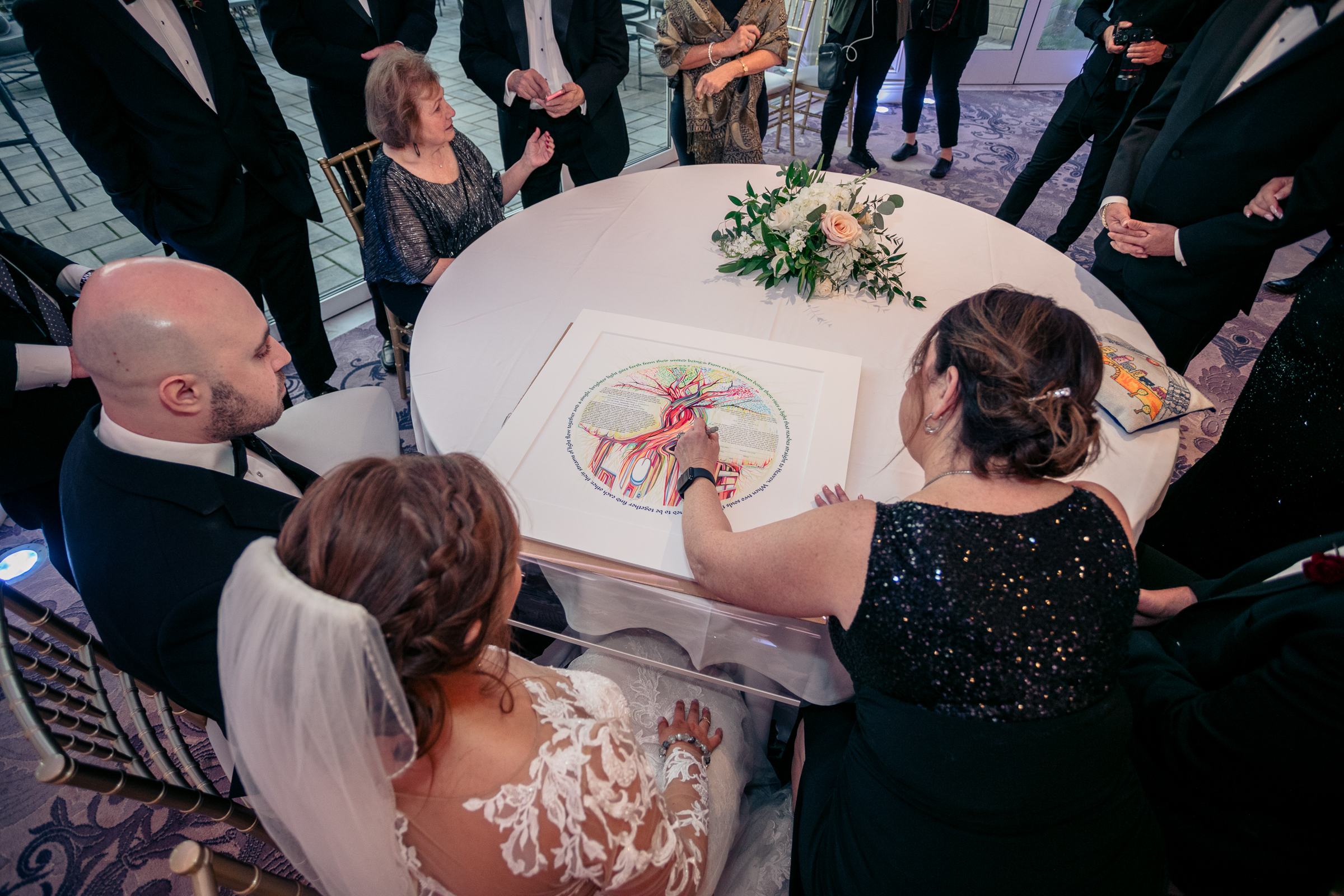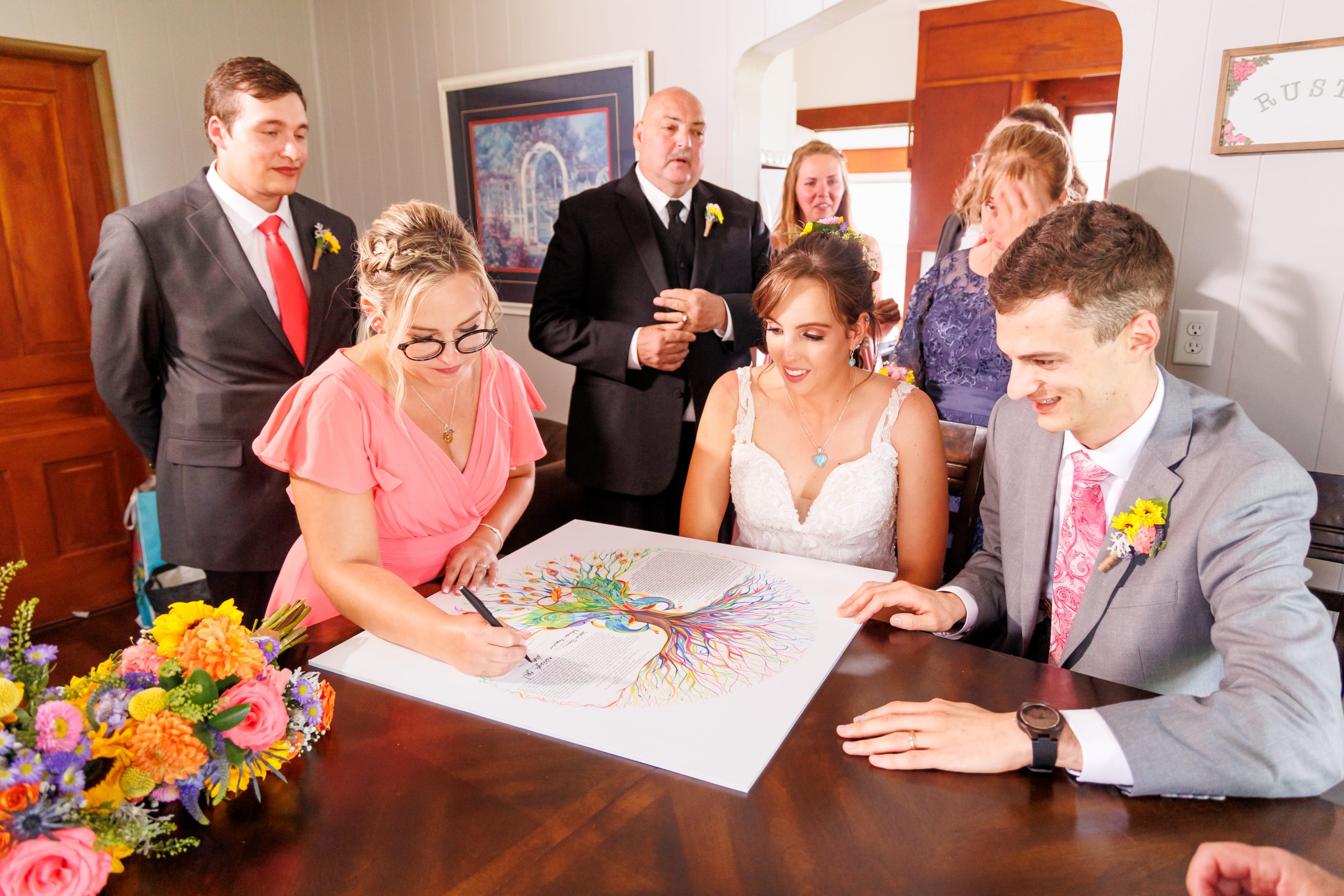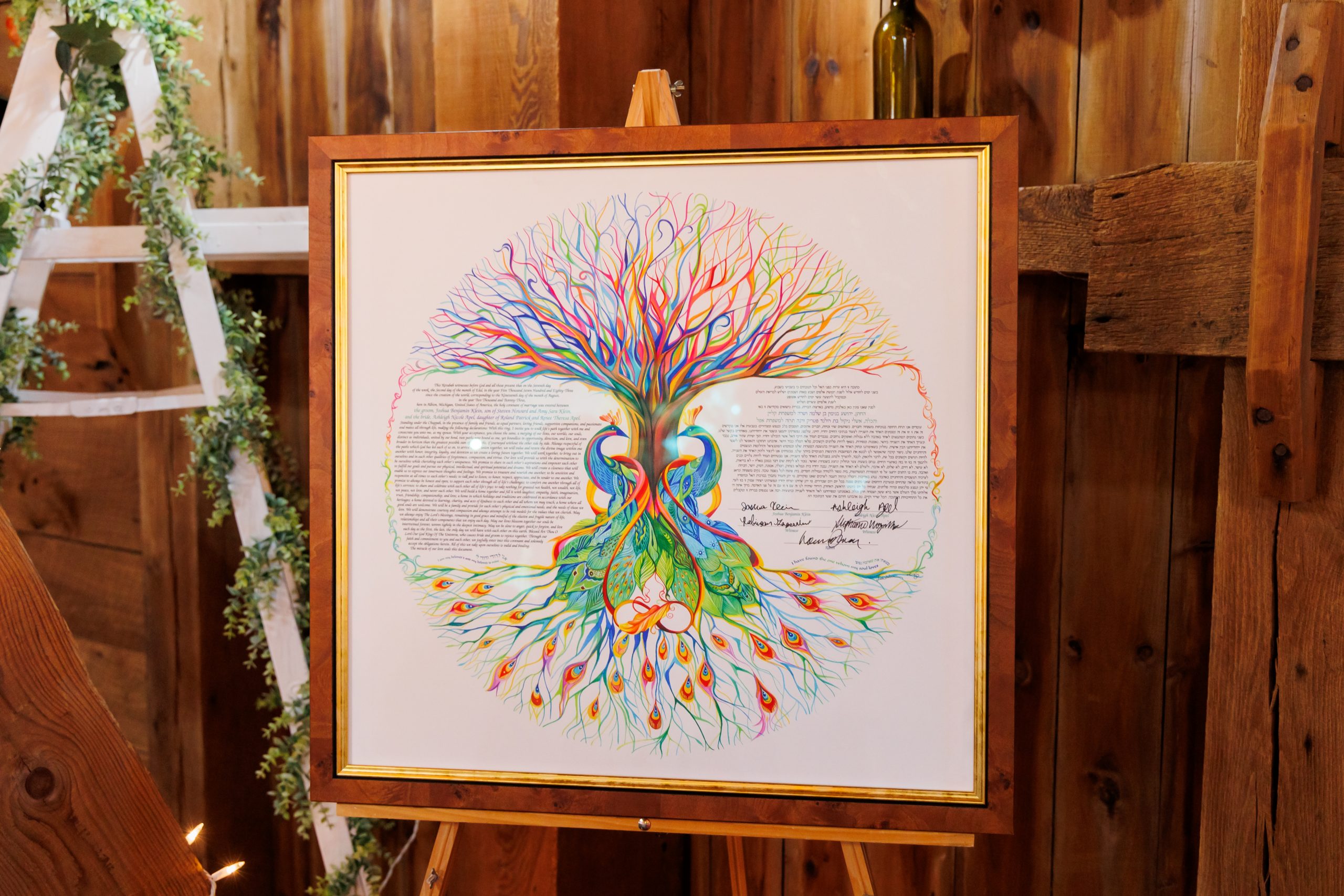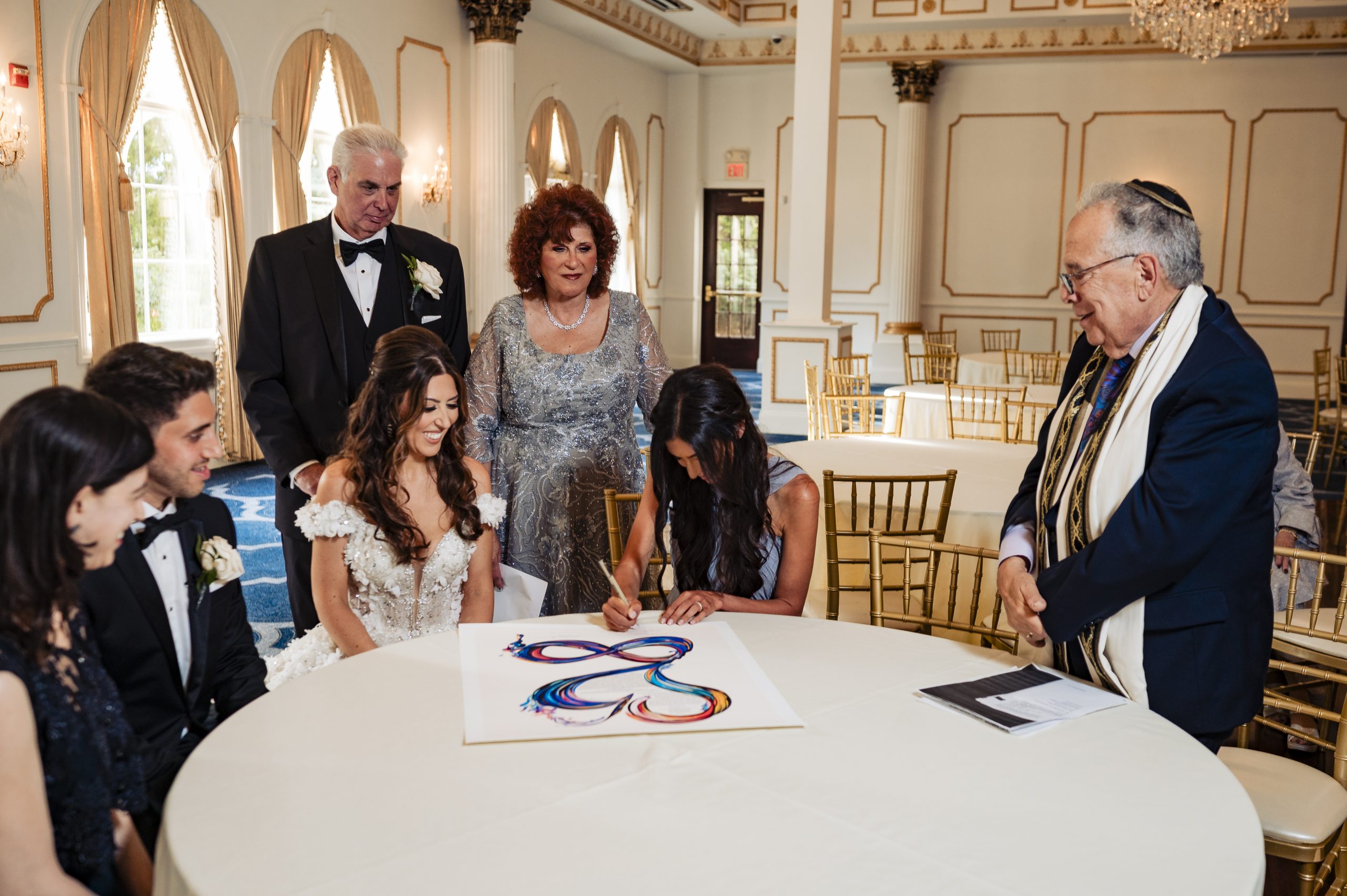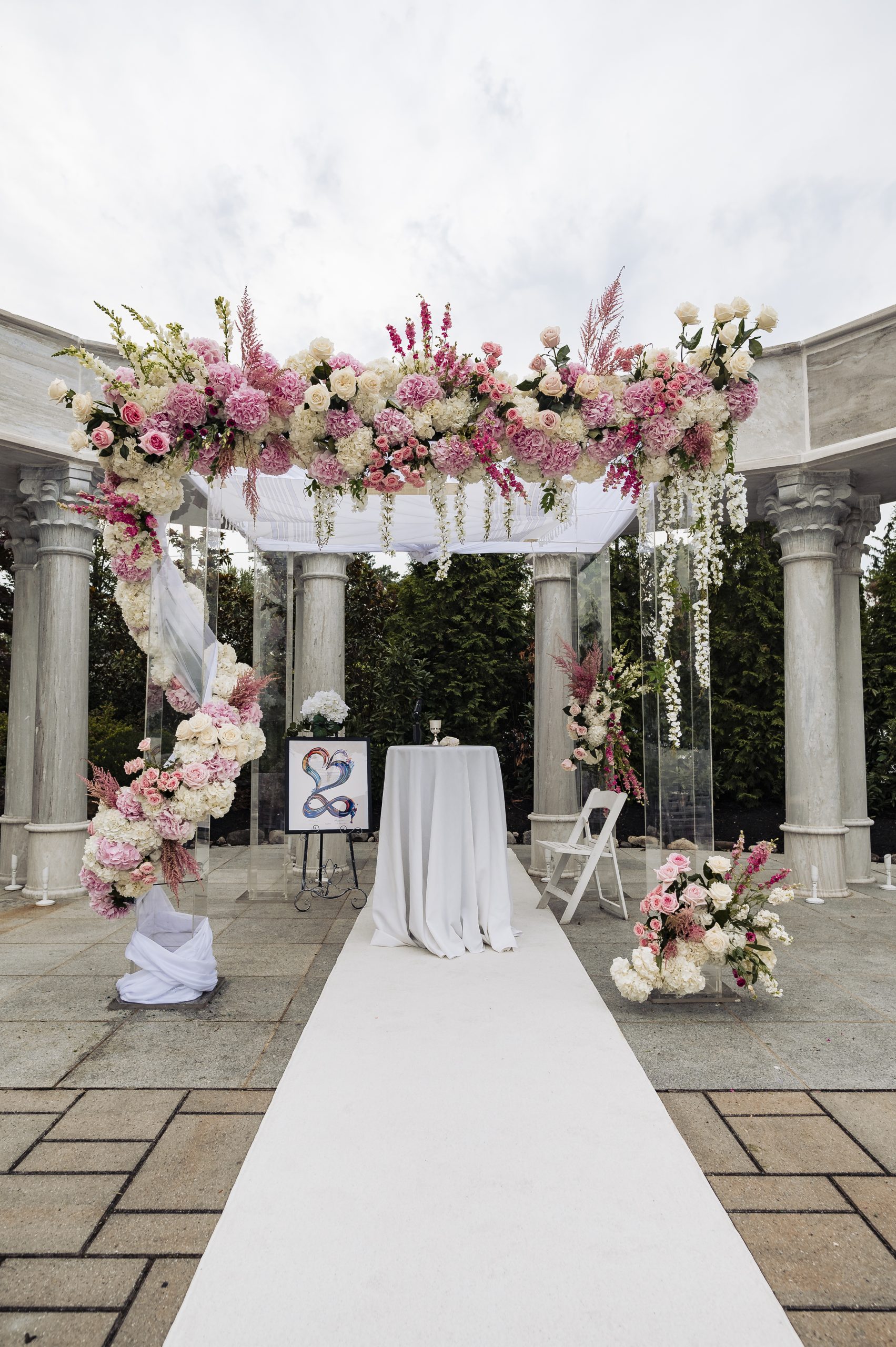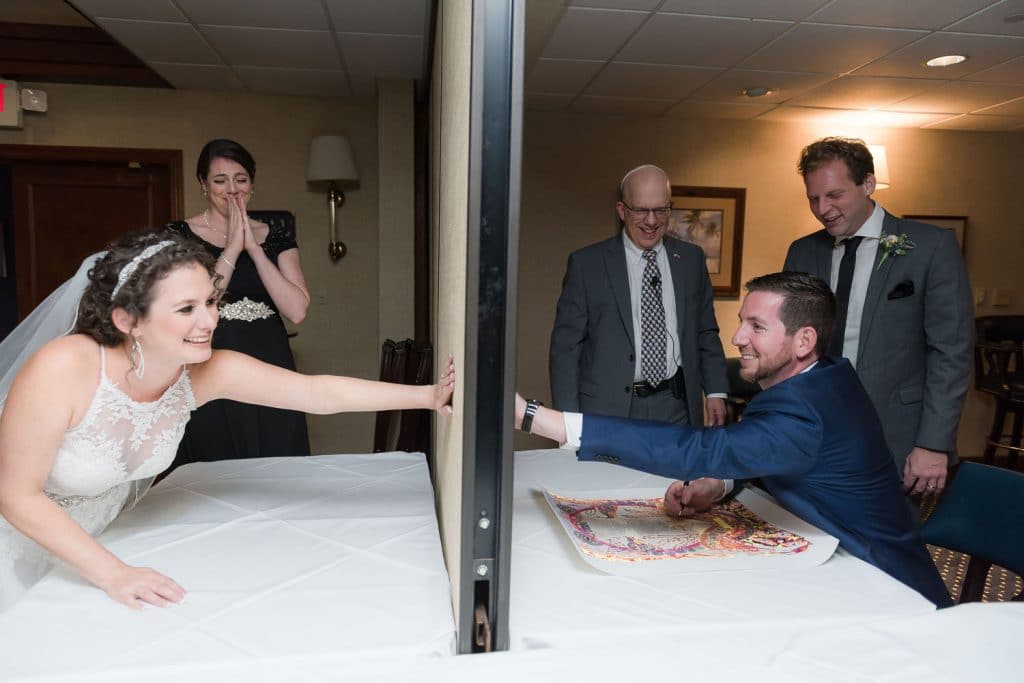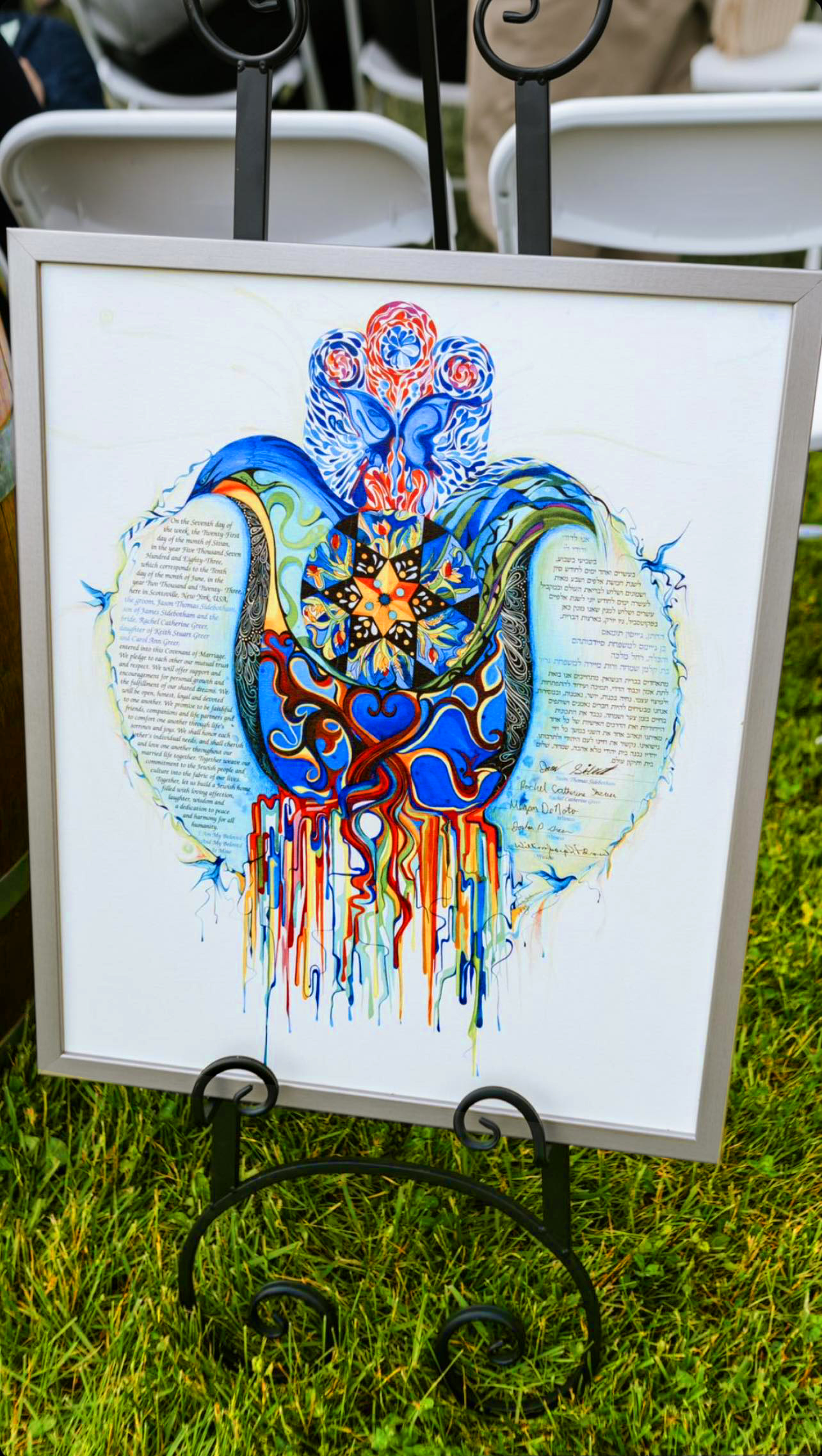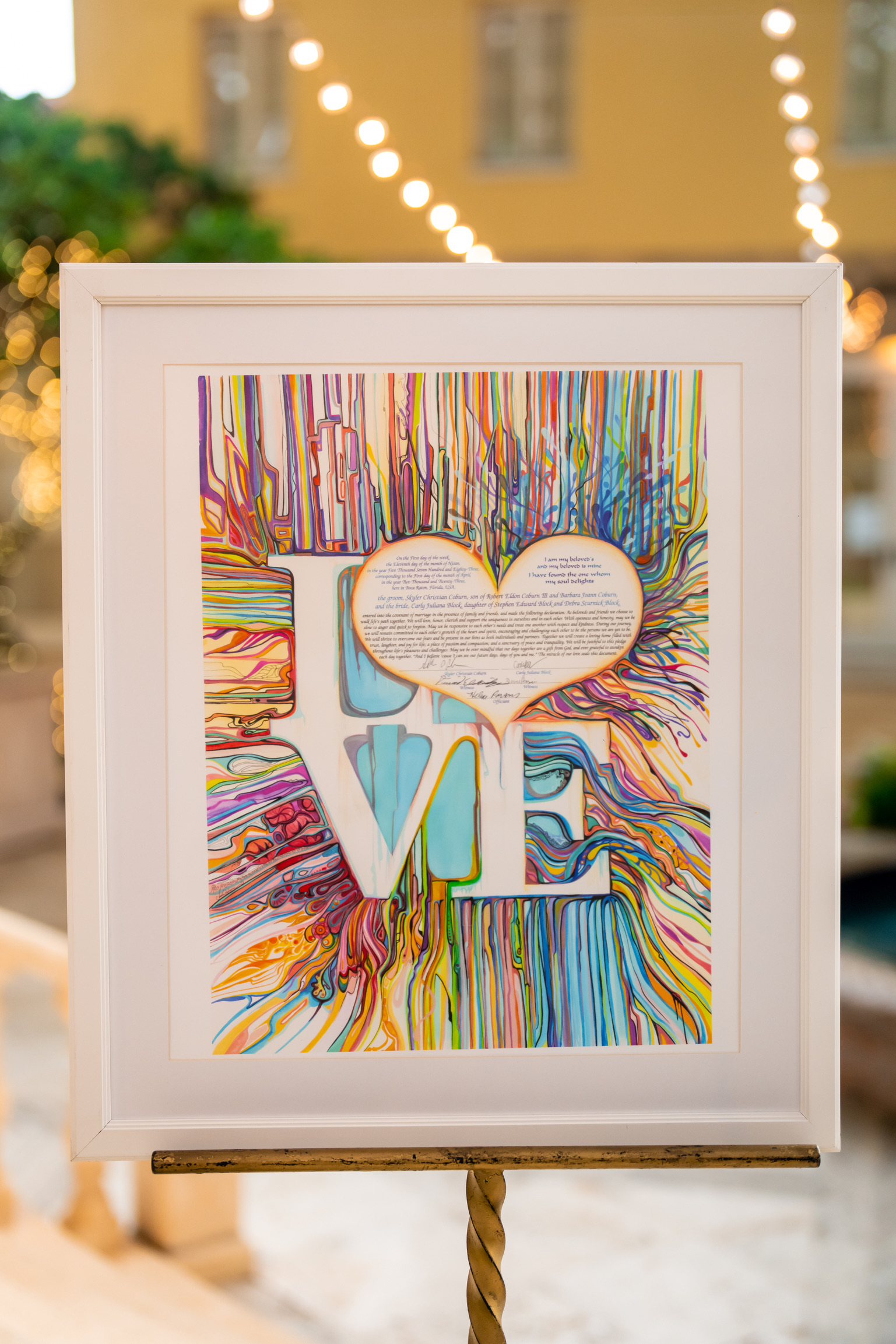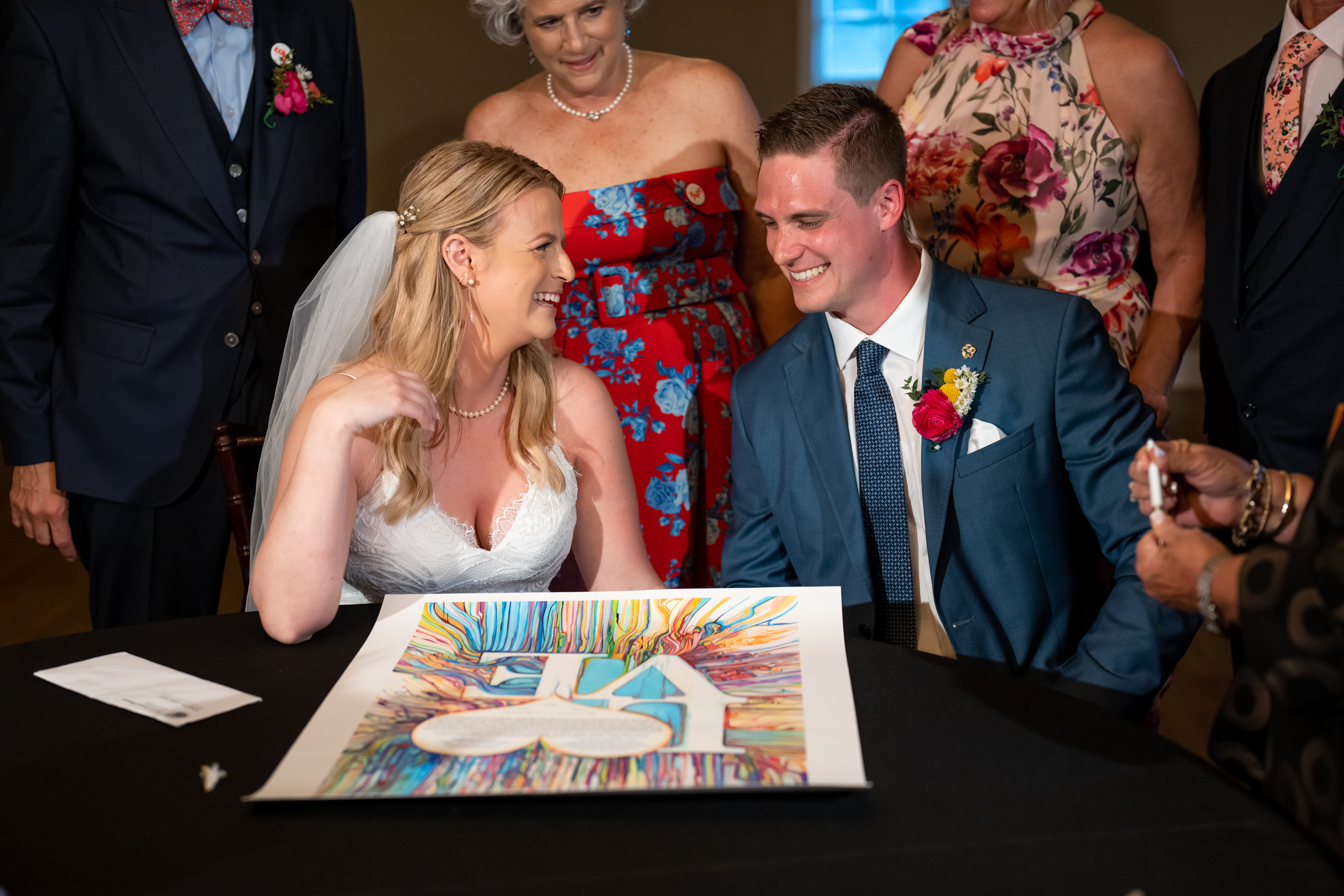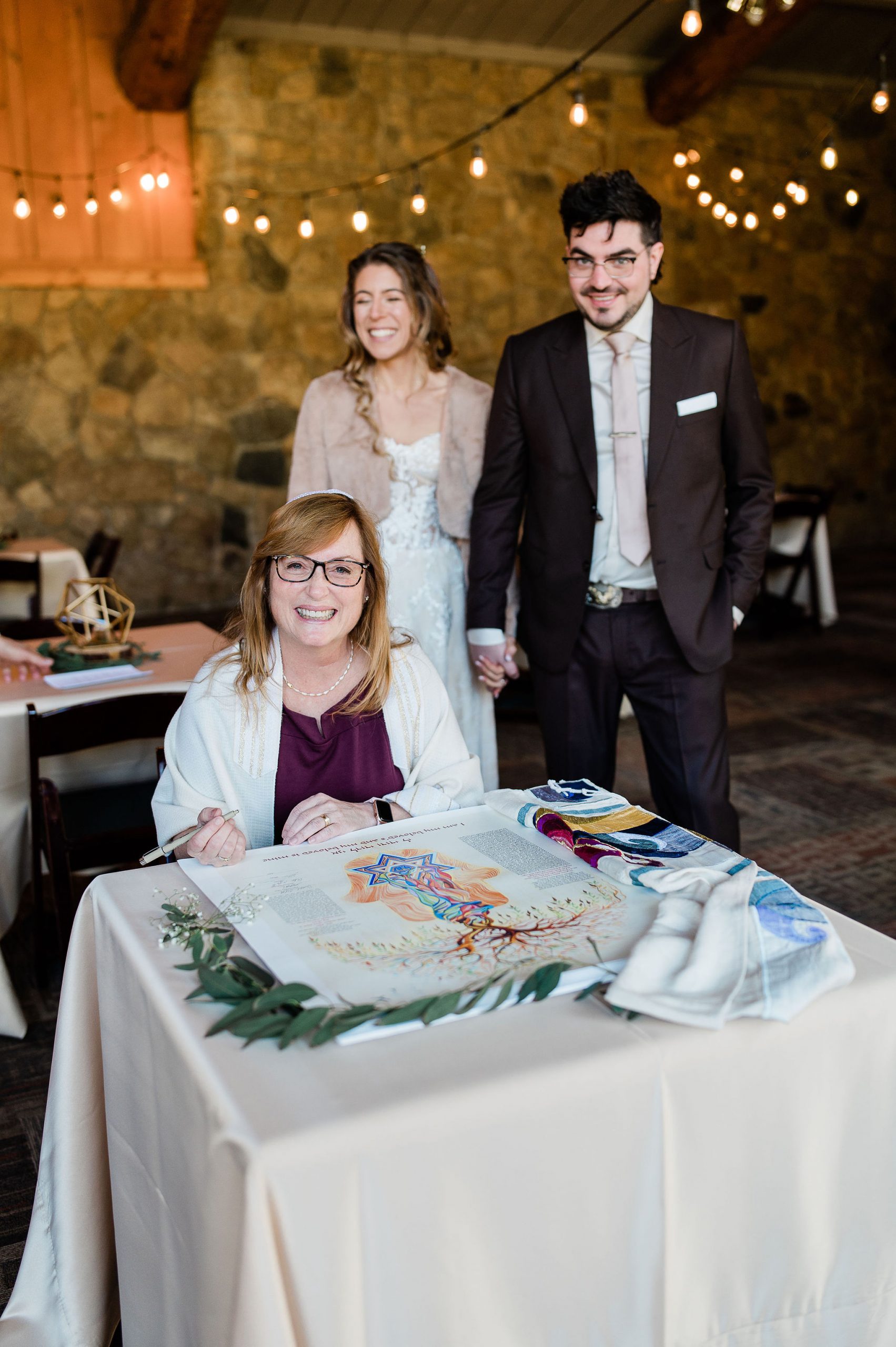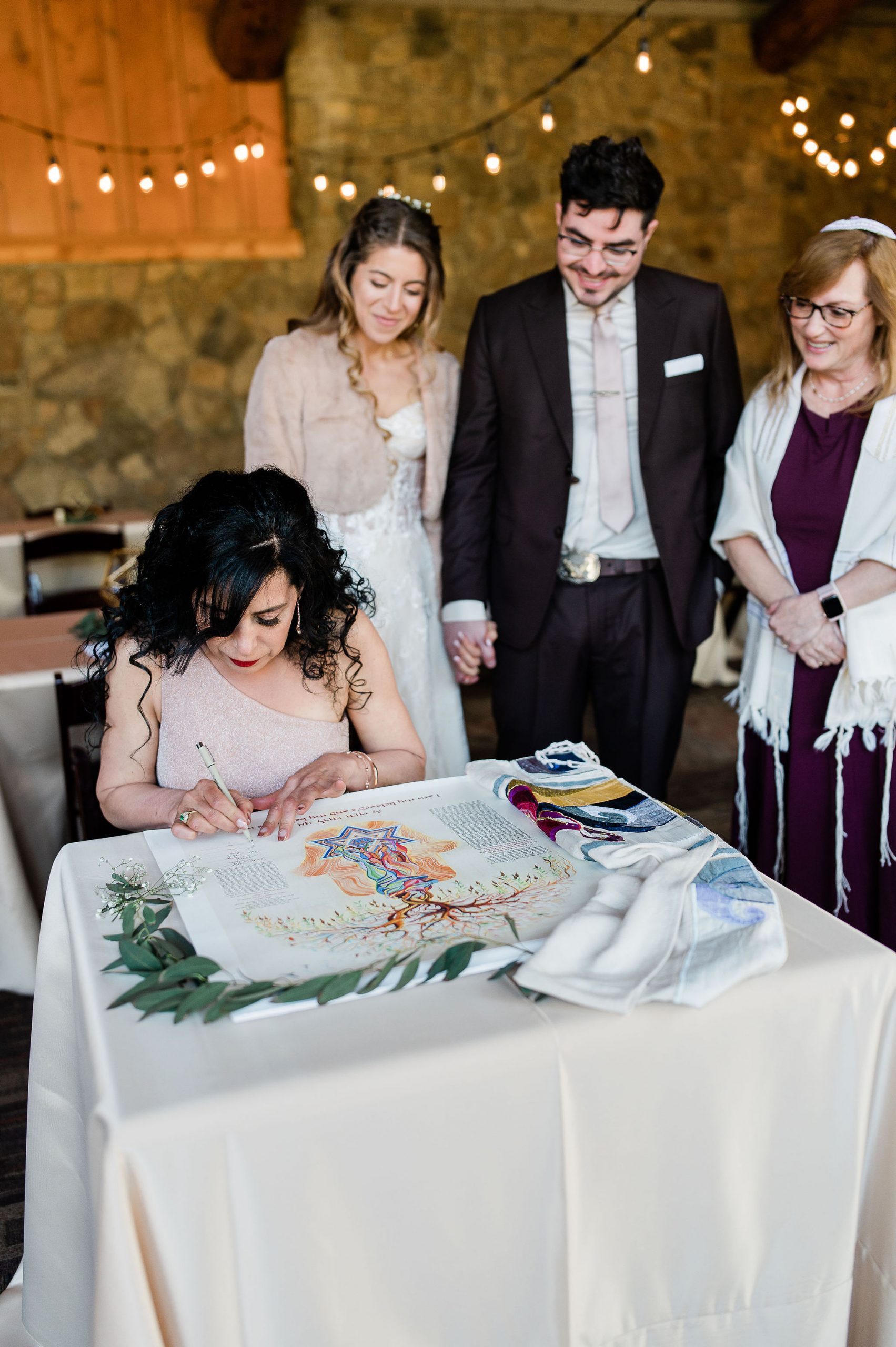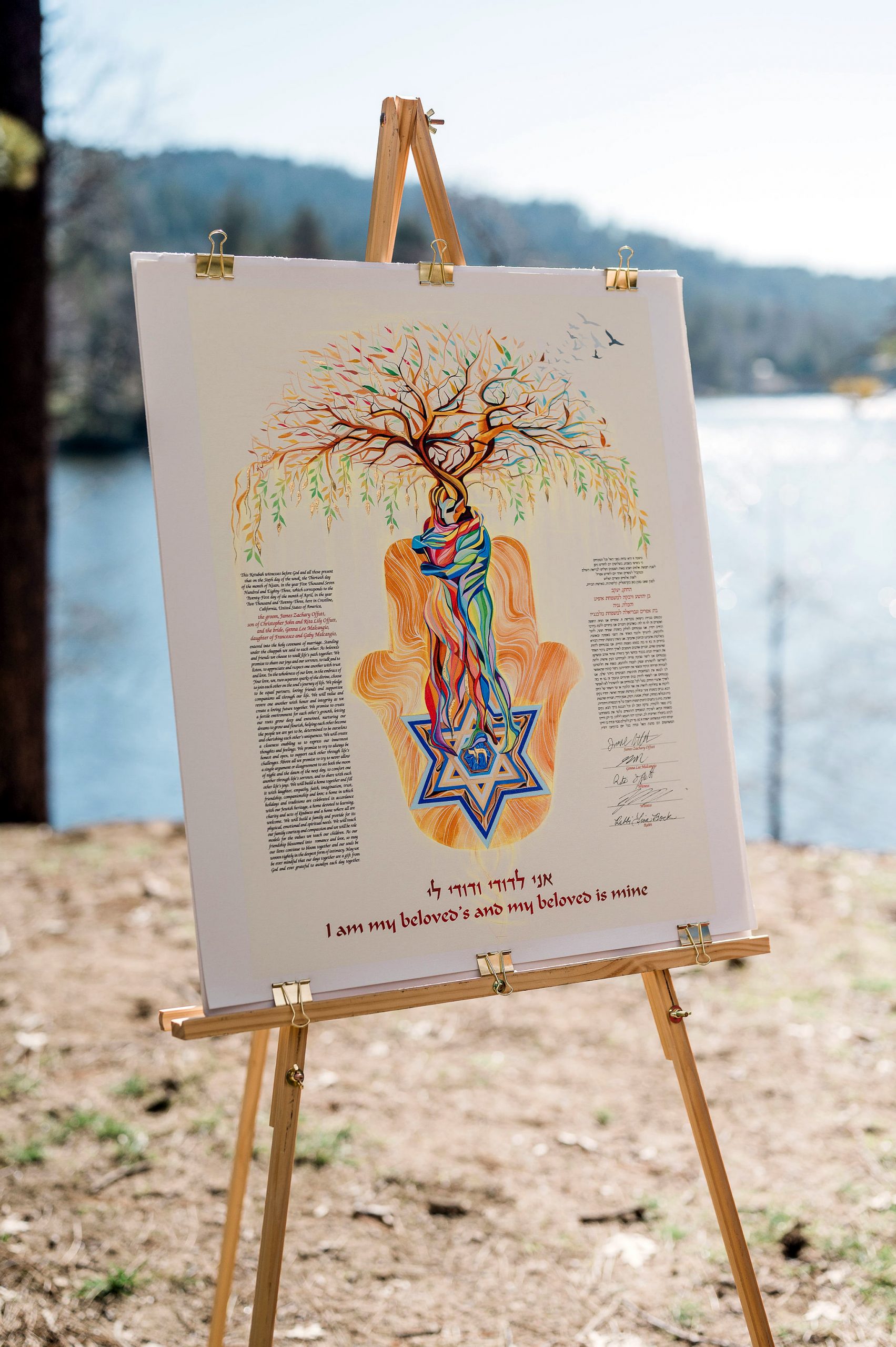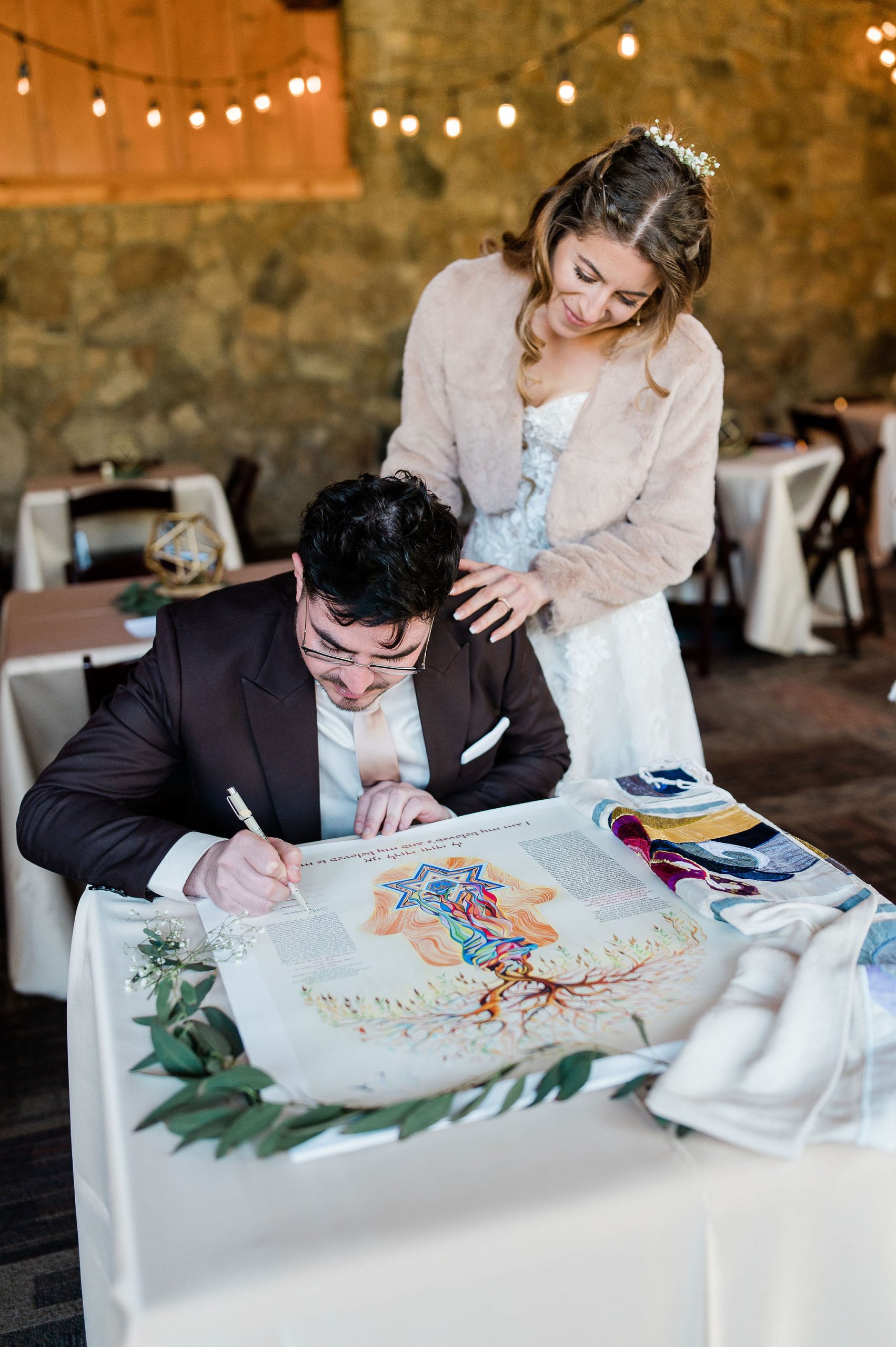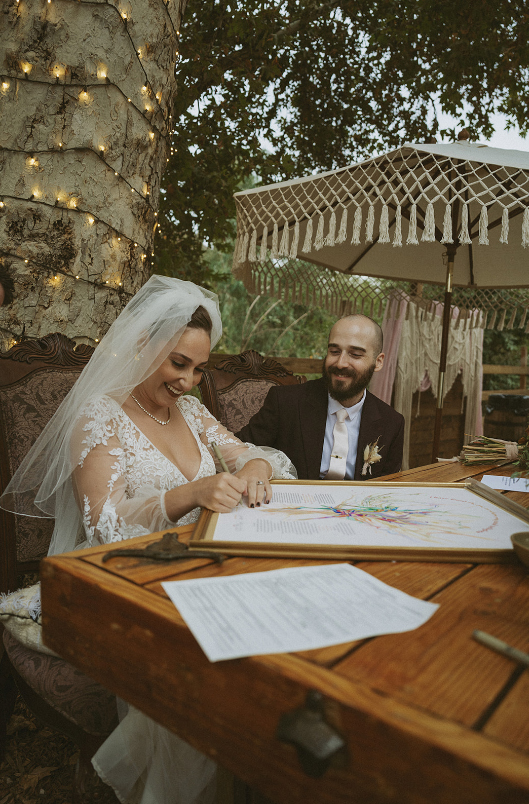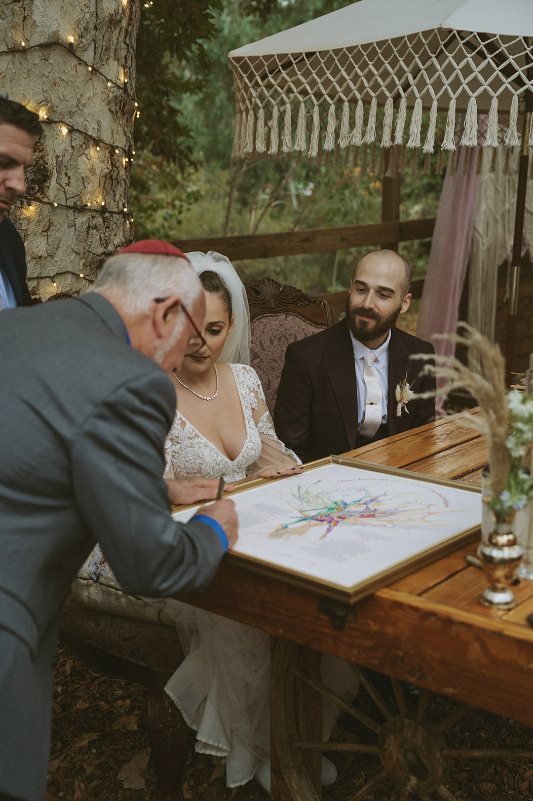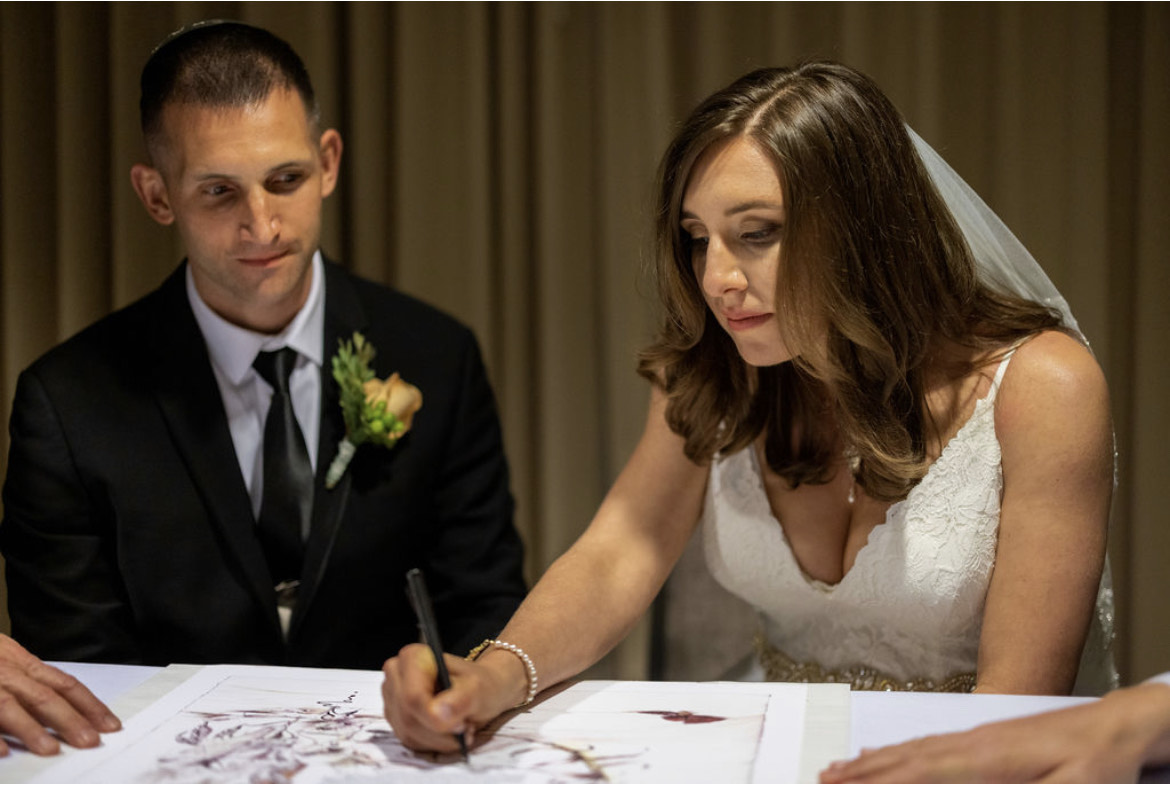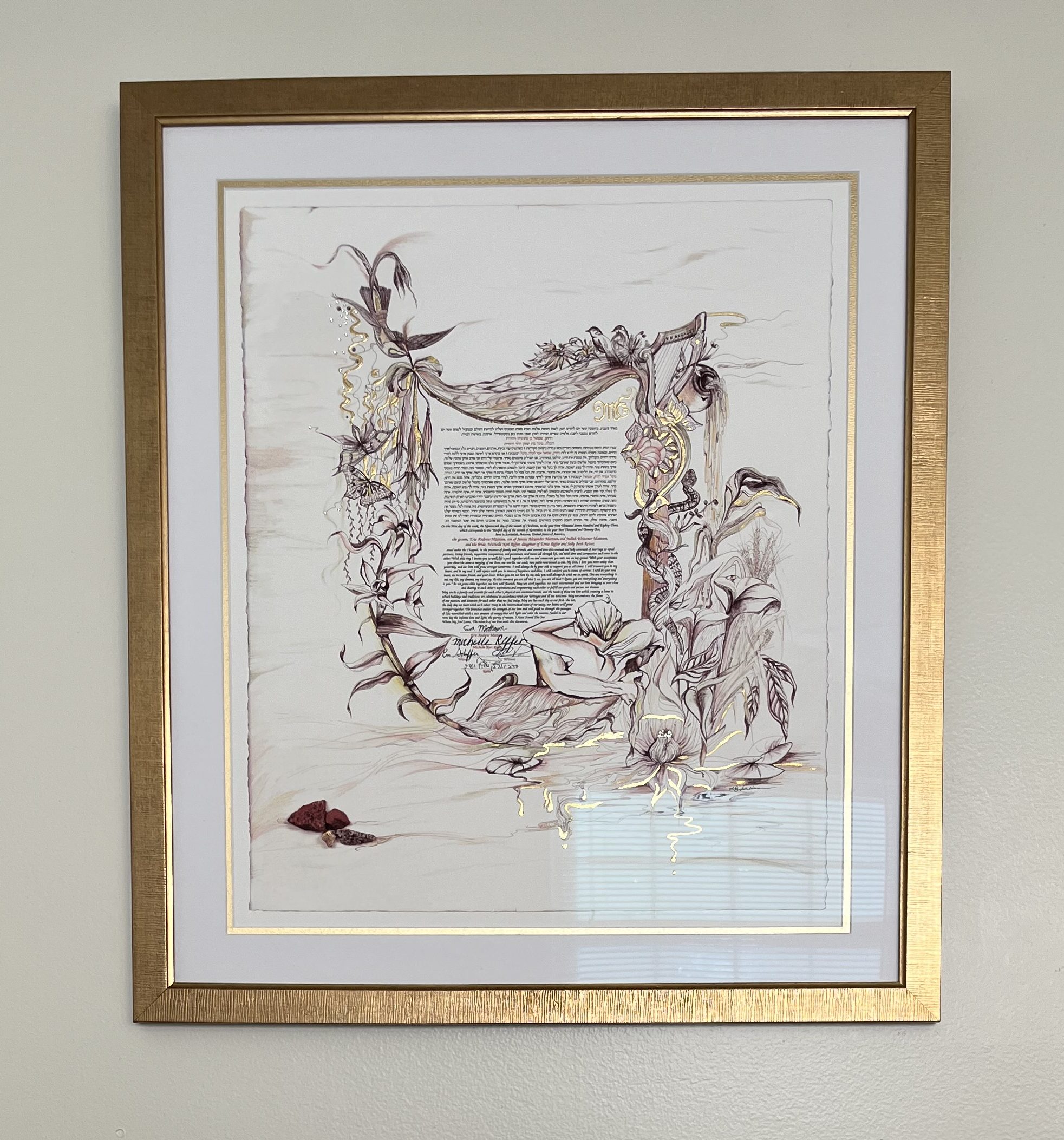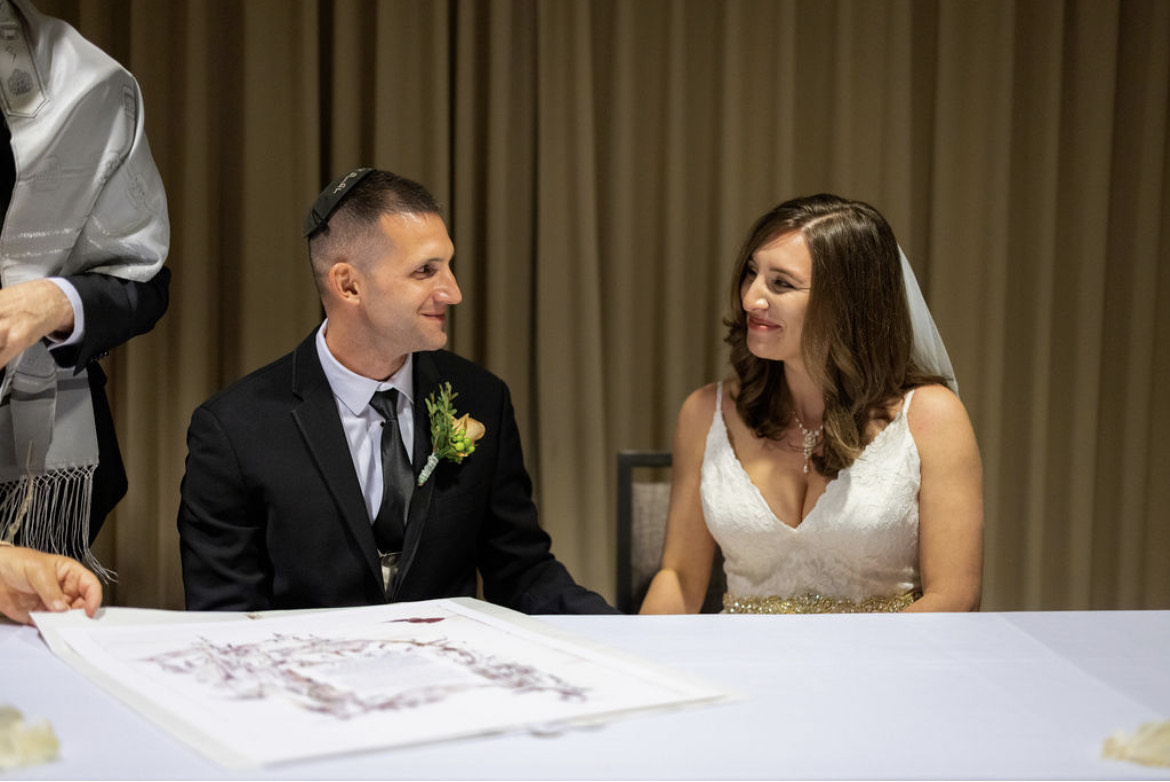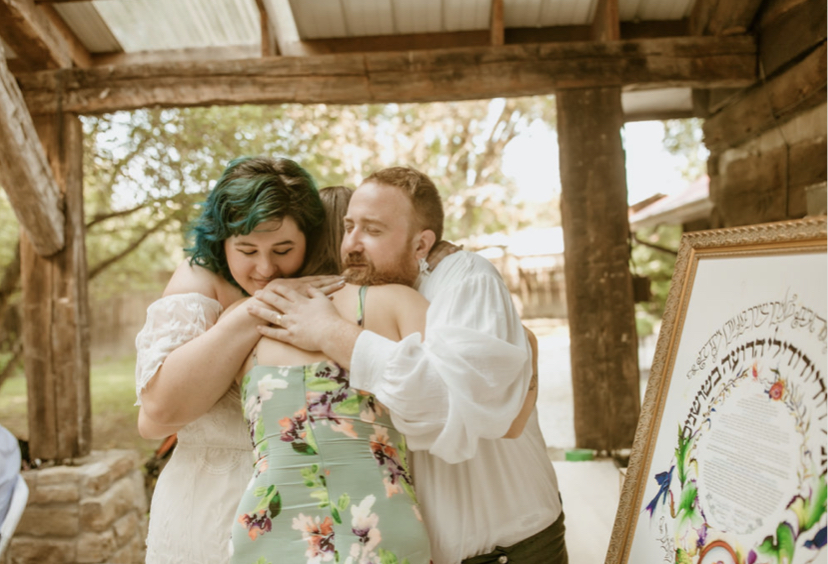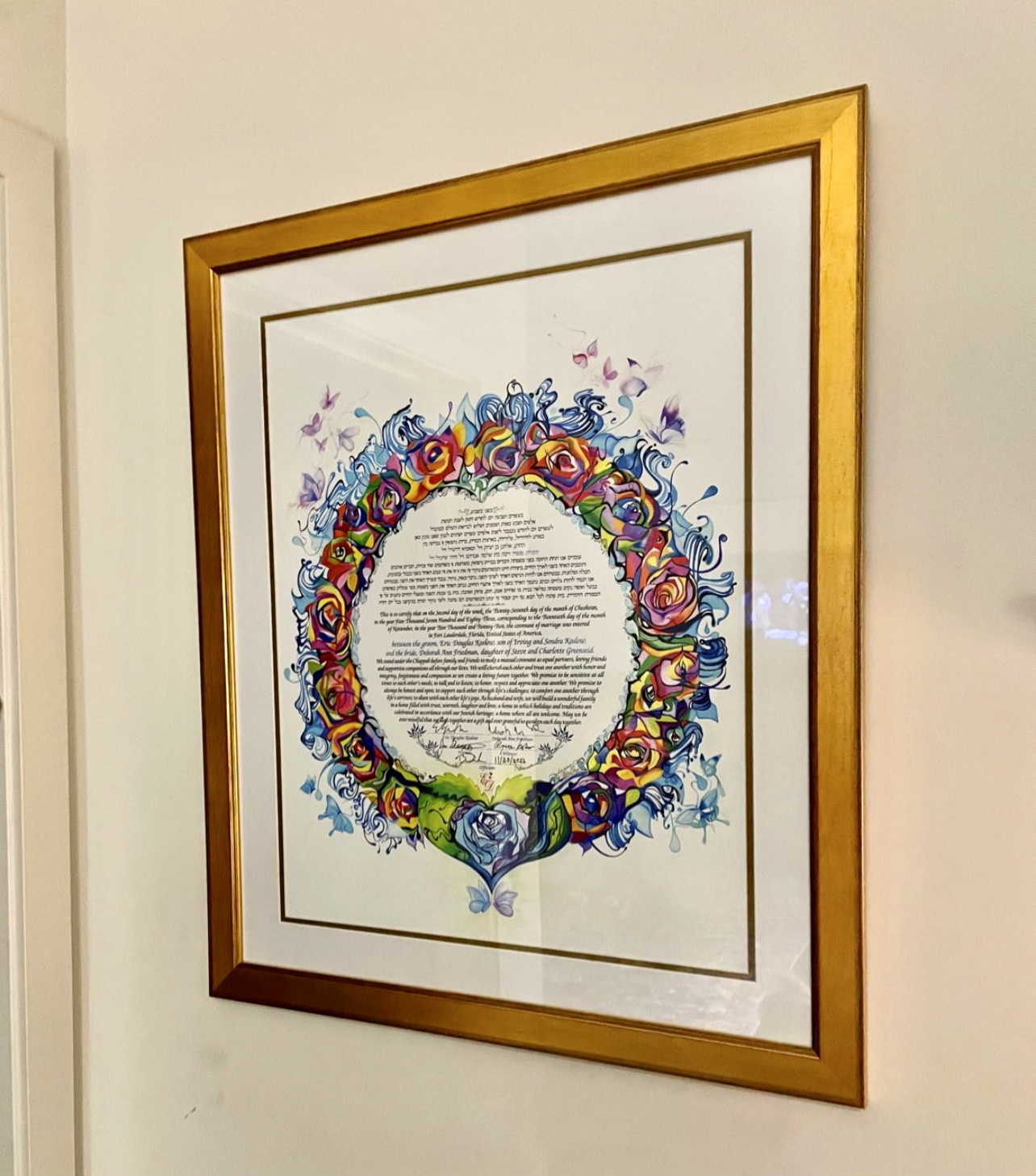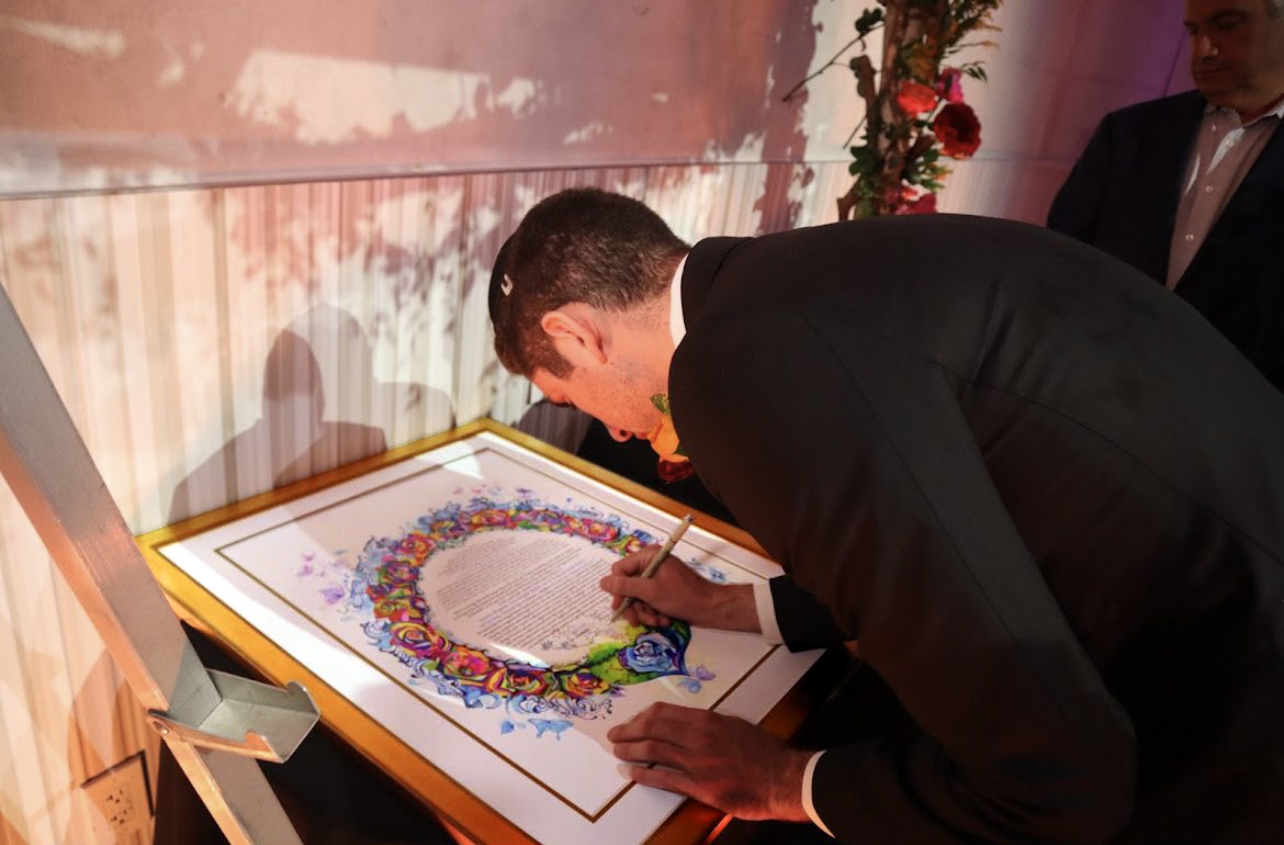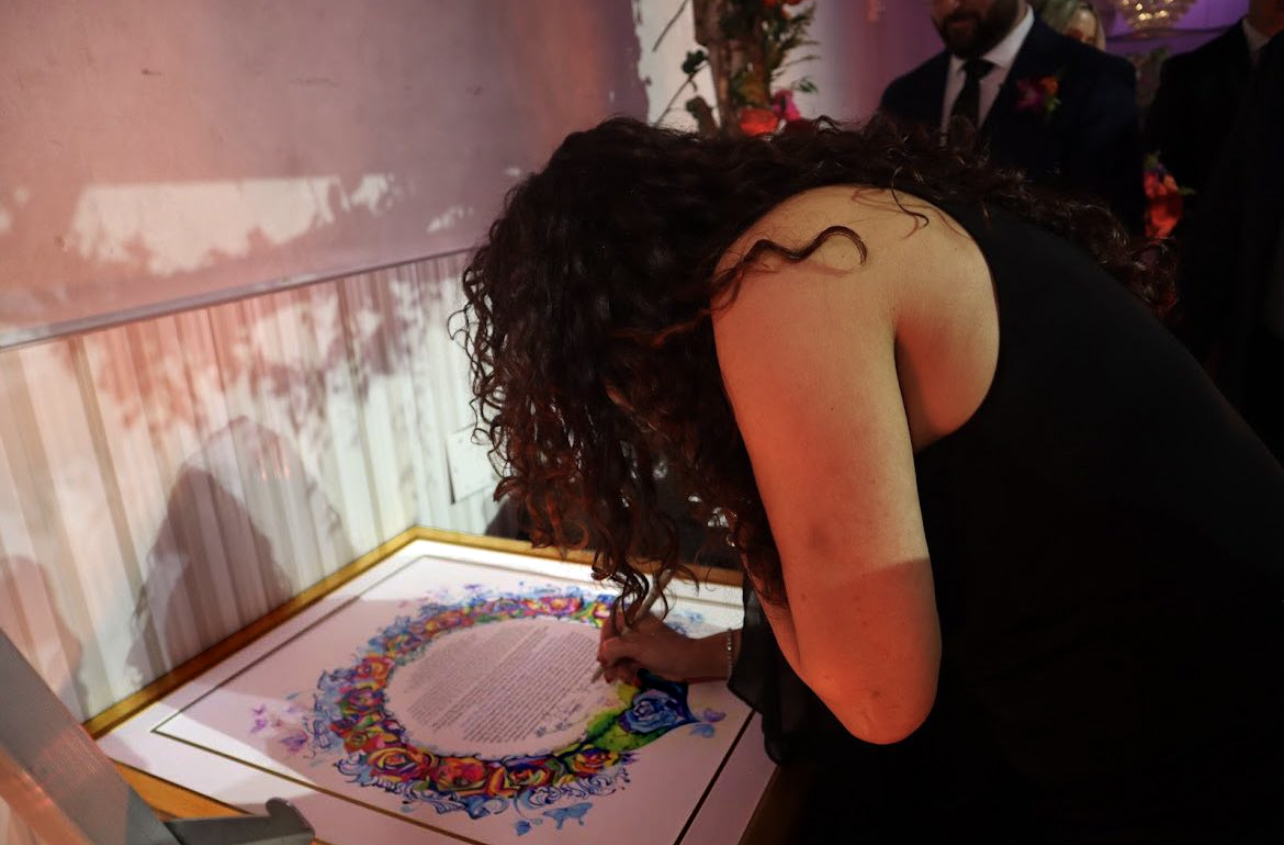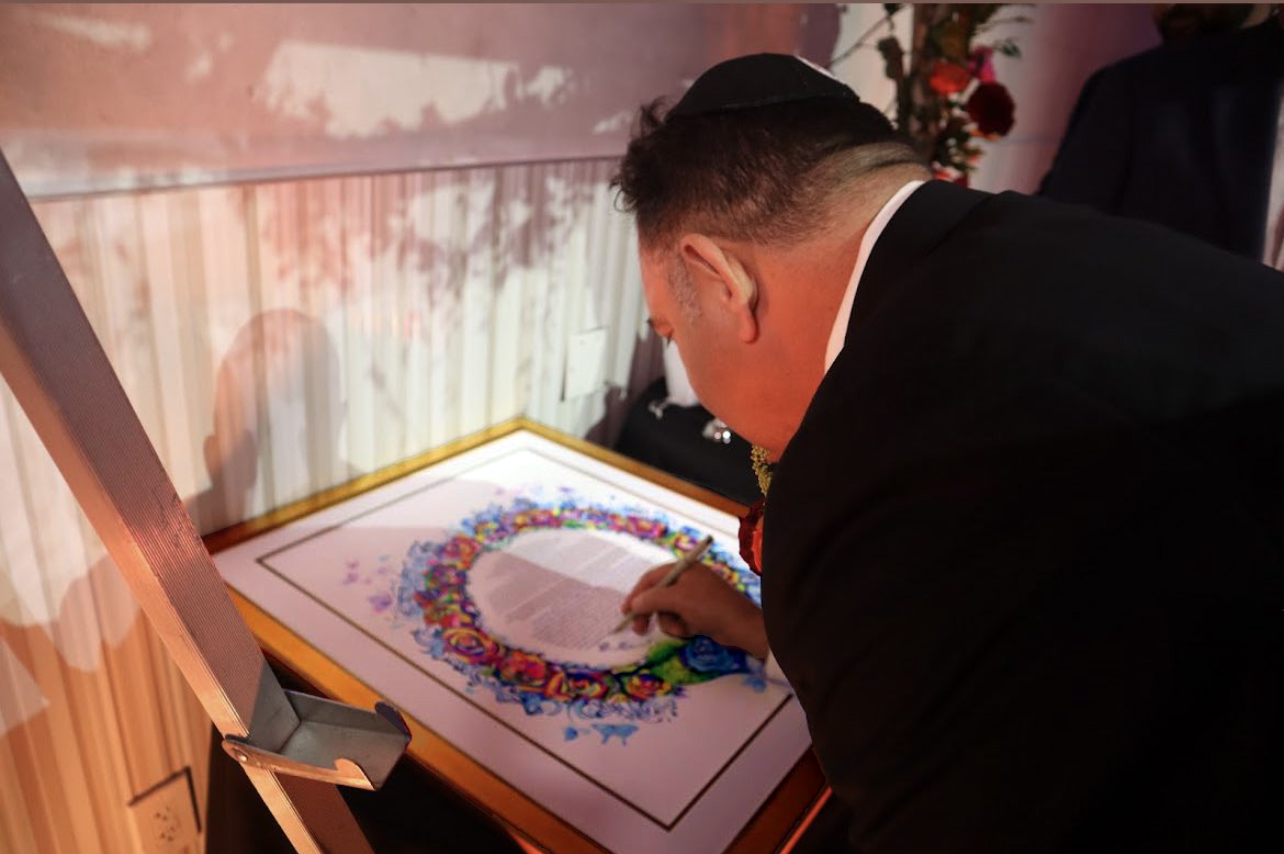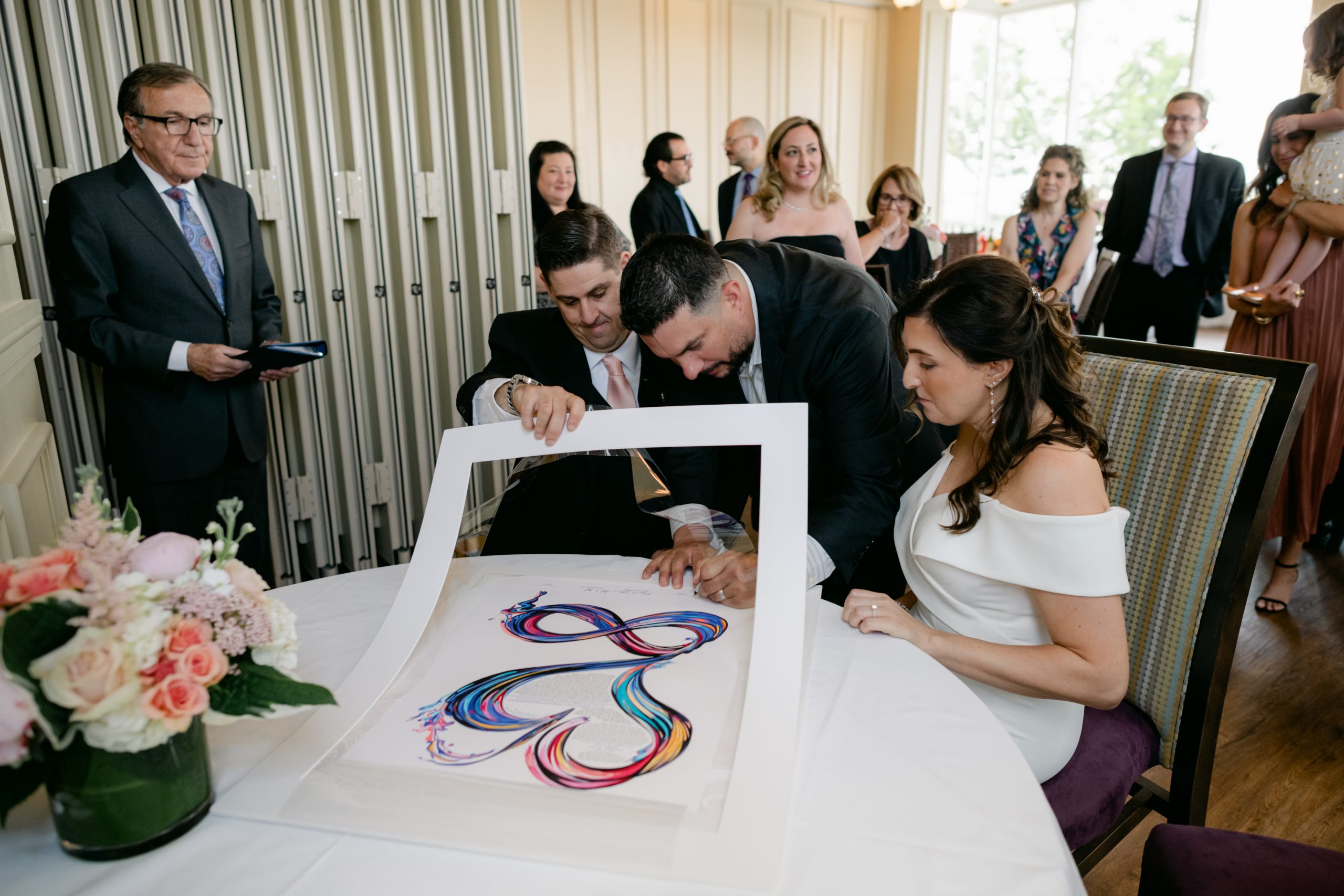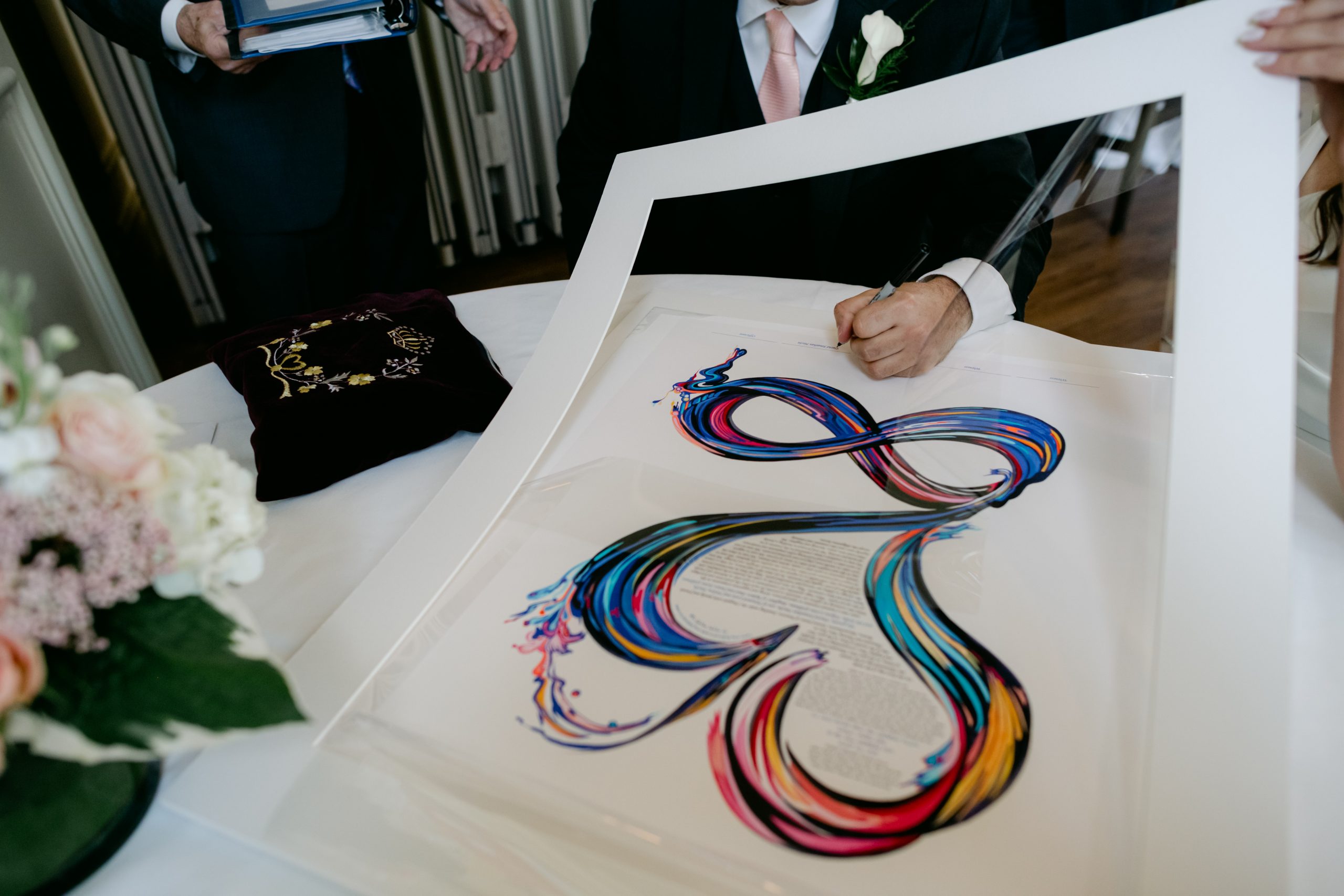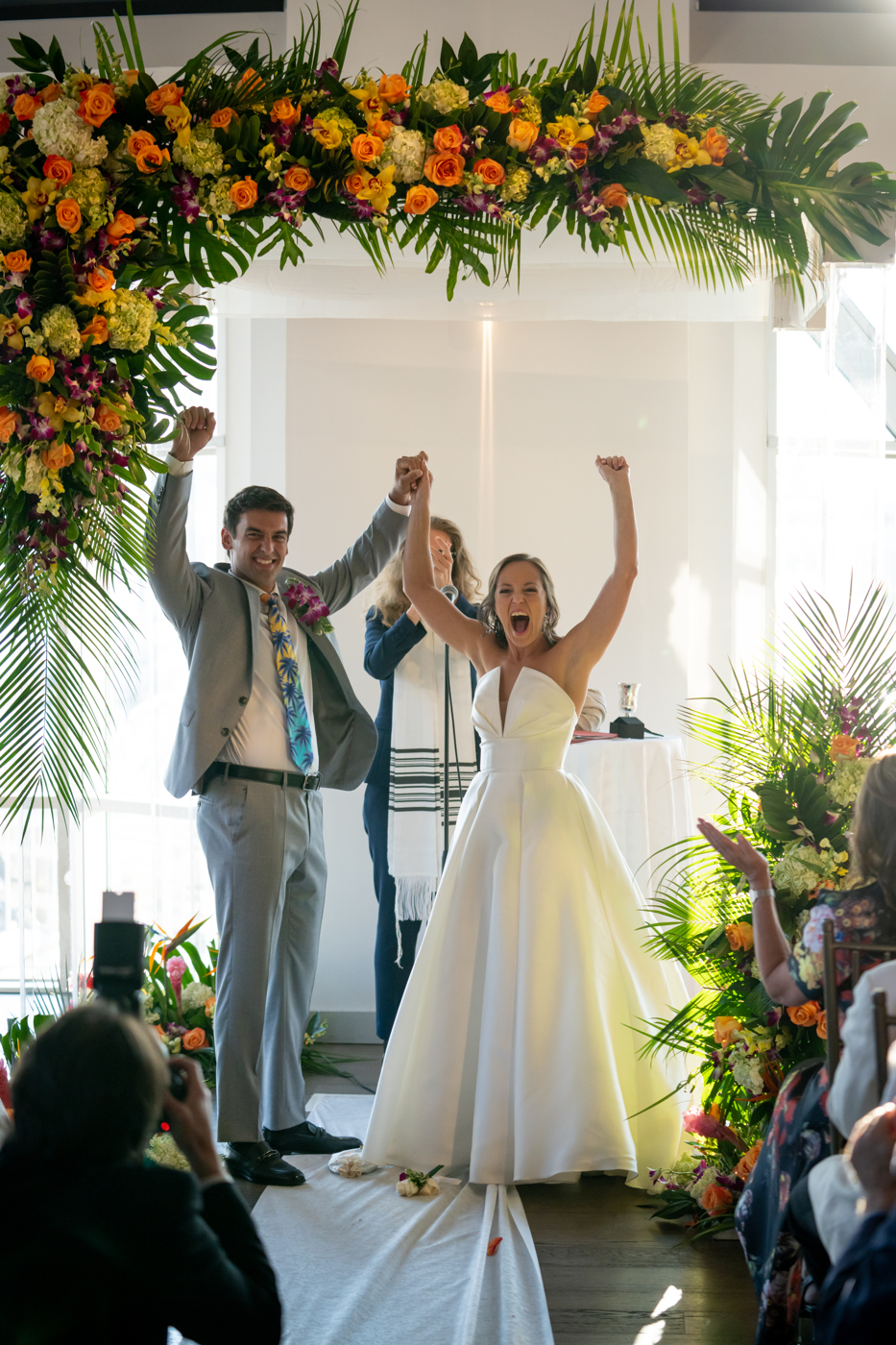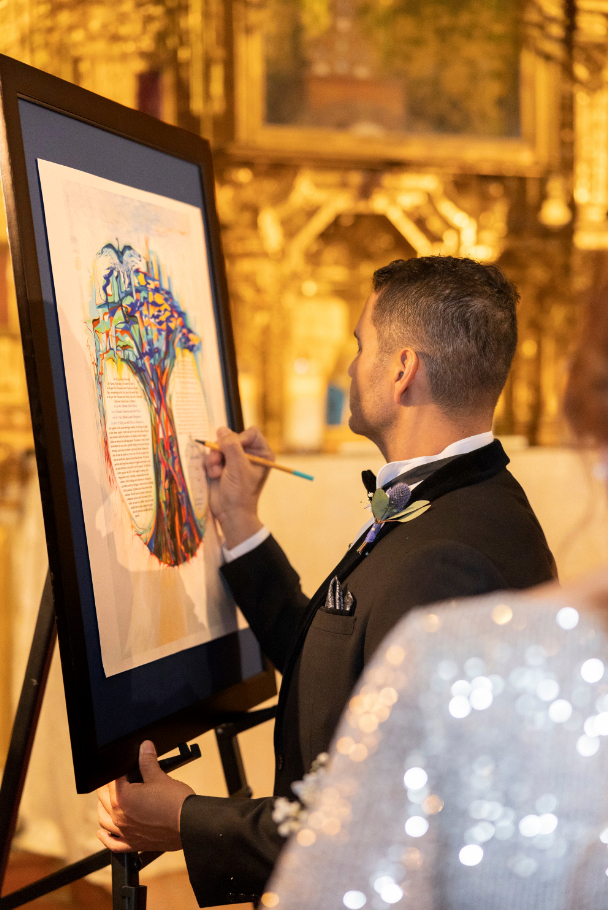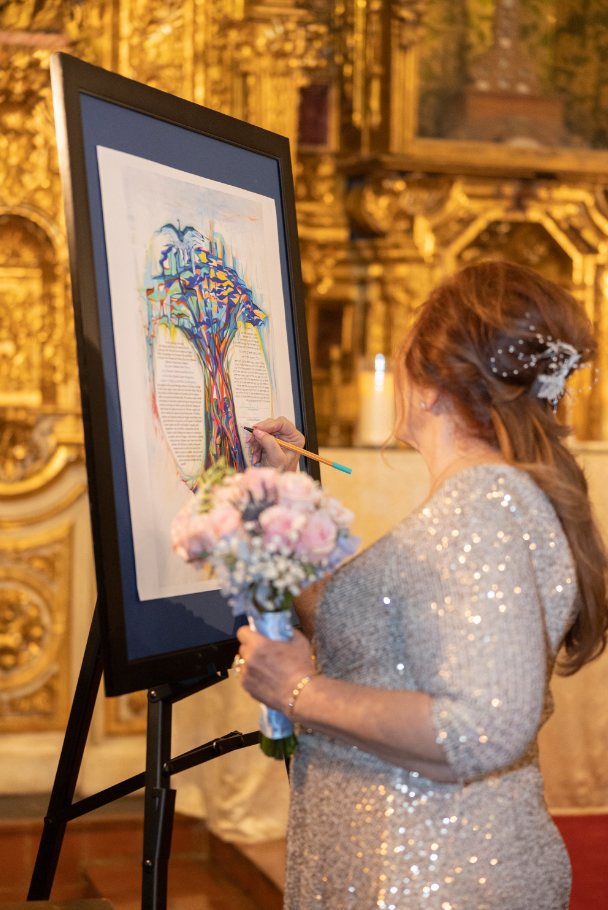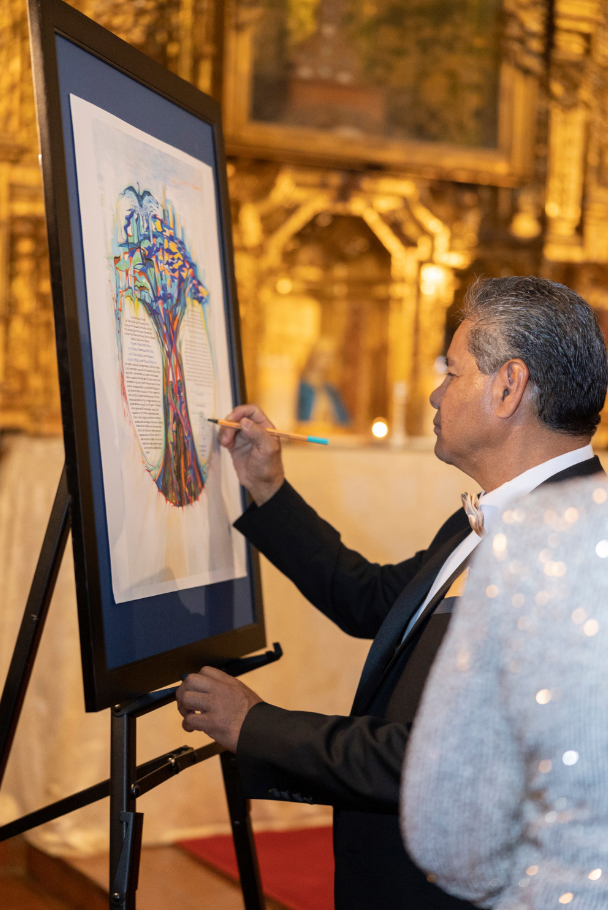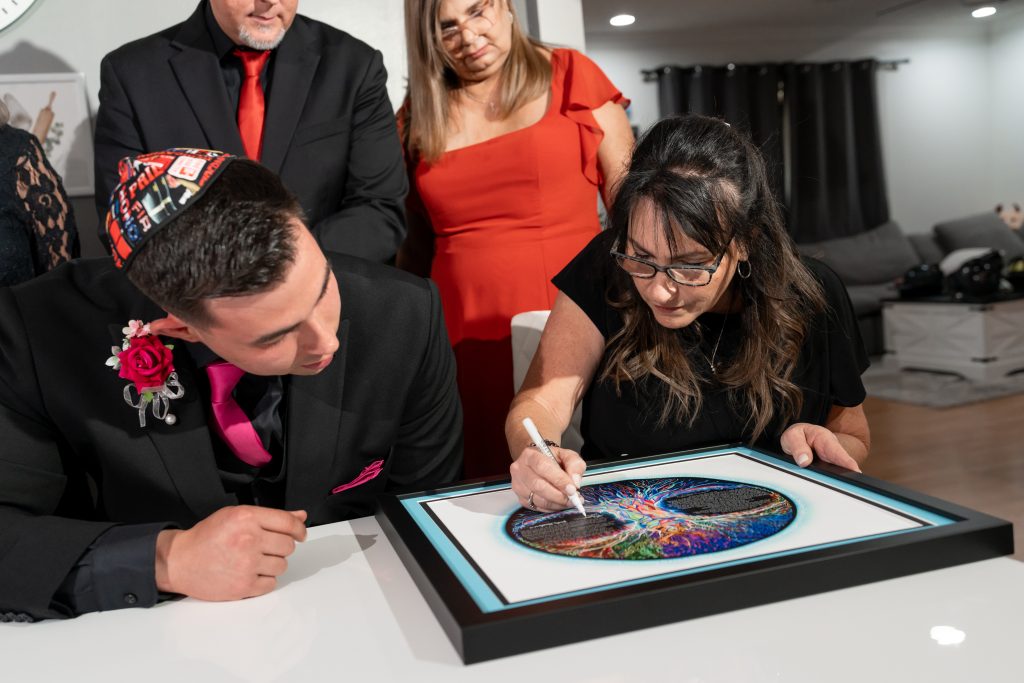
Everything you need to know about Ketubah Signing
Big Thank You to all the couples who shared stunning photos from their best day ever—celebrating their love, ketubah signings, and unforgettable moments throughout this blog.

Whether your wedding is traditional, modern, interfaith, or somewhere in between, the Ketubah signing is one of the most personal and symbolic moments of your big day. Here’s everything you need to know—how the process works, who signs it, and how to feel confident and prepared.
Who Signs the Ketubah?
In traditional wedding ceremonies, such as Orthodox, the Ketubah signing happens before the veiling and the chuppah ceremony. It usually takes place in a private space at the wedding venue, with the Rabbi, the fathers of the couple, and two witnesses, Jewish individuals who are not related to the couple. The witnesses sign first to affirm that the marriage agreement was entered into willingly and properly. The Rabbi and groom might sign too, but it’s not always required.
Later on, during the chuppah ceremony, the Ketubah is read aloud in front of all the guests.

In modern wedding ceremonies, such as Conservative, Reform, interfaith, or LGBTQ+ communities the partners sign the Ketubah as well. Witnesses can be close friends or family members, regardless of gender or level of religious observance. Some couples also invite their officiant, Rabbi, cantor, or judge to sign on both the ketubah and the legal document. Some couples choose to include more than two witnesses to honor those closest to them.
Signing Your Ketubah
Whether your Ketubah is customized on fine art paper or canvas, make sure to use an archival-quality pen, that dries fast, doesn’t smudge, and won’t fade over time.
A waterproof, acid-free pen like a Micron (01 or 02) is a great choice.
Try to avoid fountain pens—they can leave blotches. And definitely test your pen on the side (separate paper) before signing the real thing!

Signing your Ketubah is such a special and meaningful part of your wedding day.
If you’re signing in Hebrew, take a little time to practice your name—it’ll help you feel more relaxed and confident. You can use either block letters or script—just go with whatever feels right for you.
